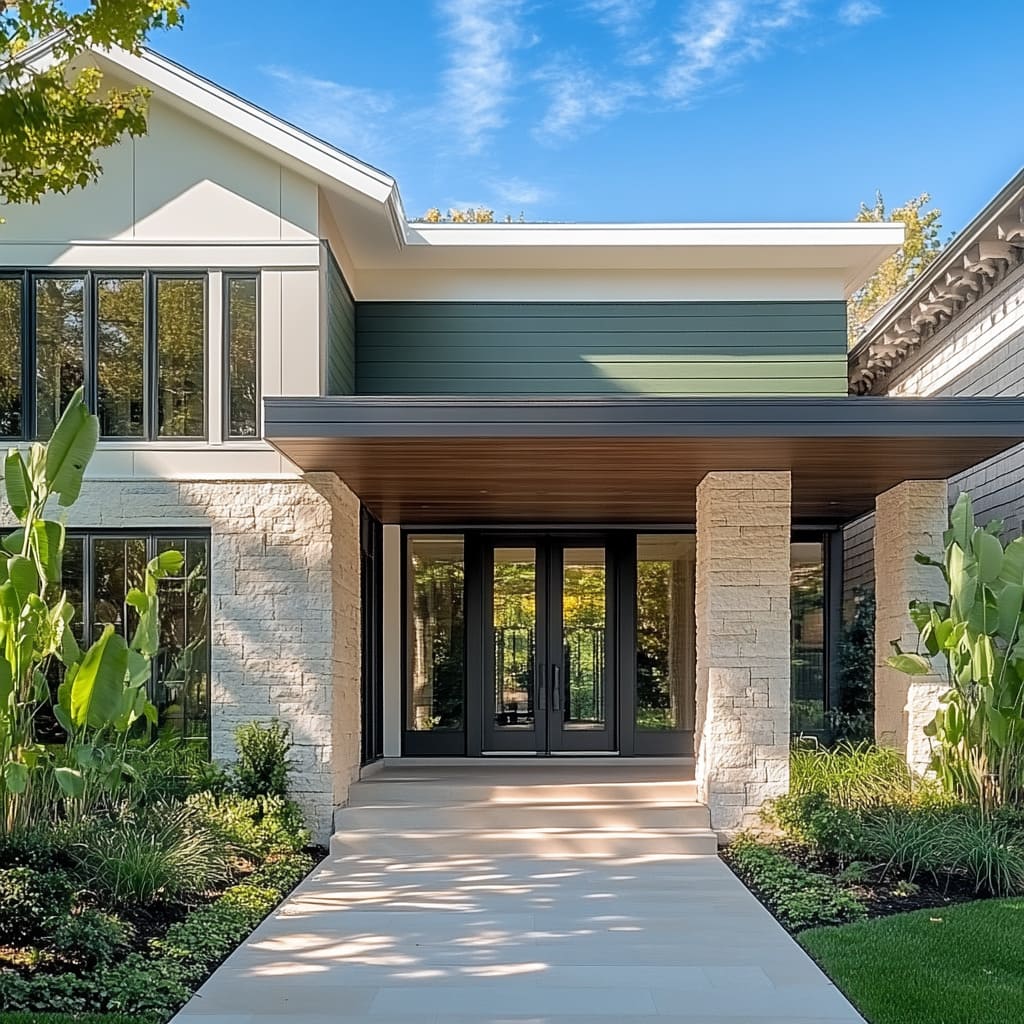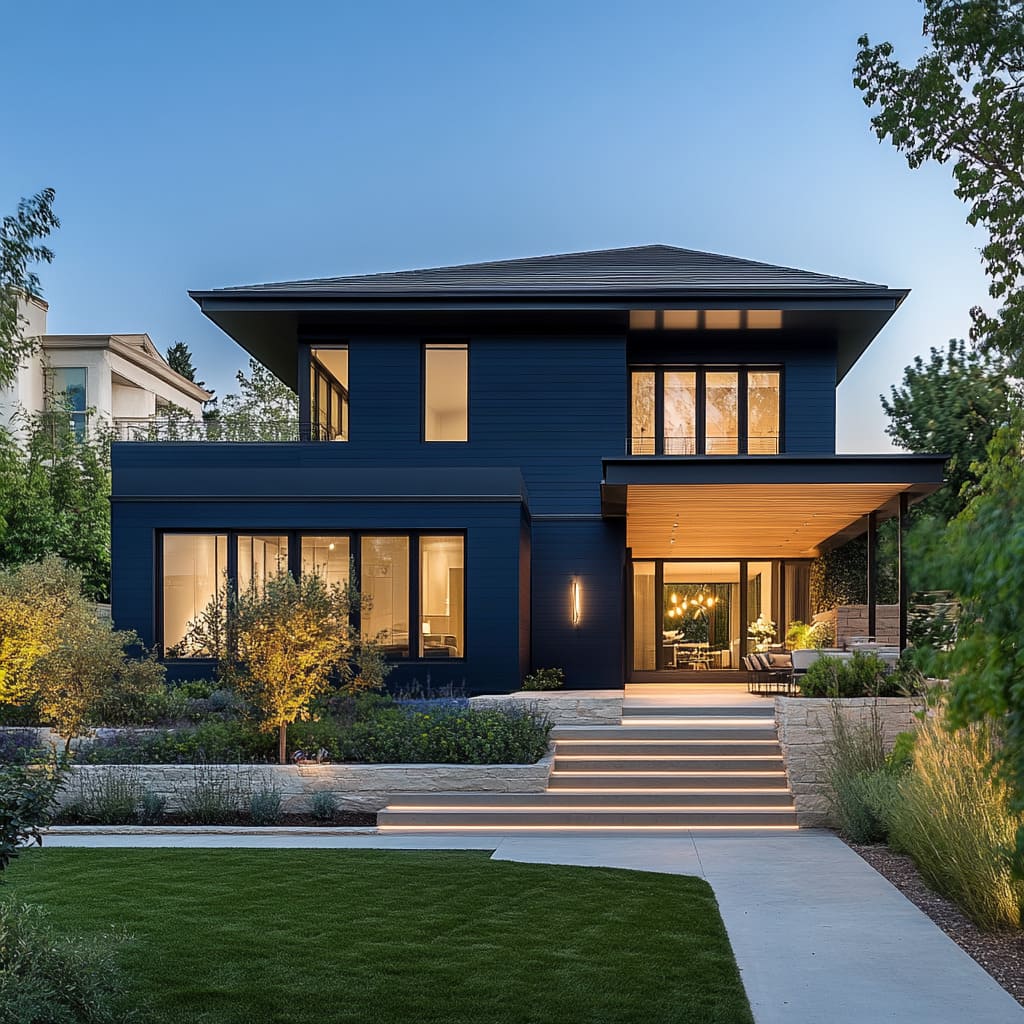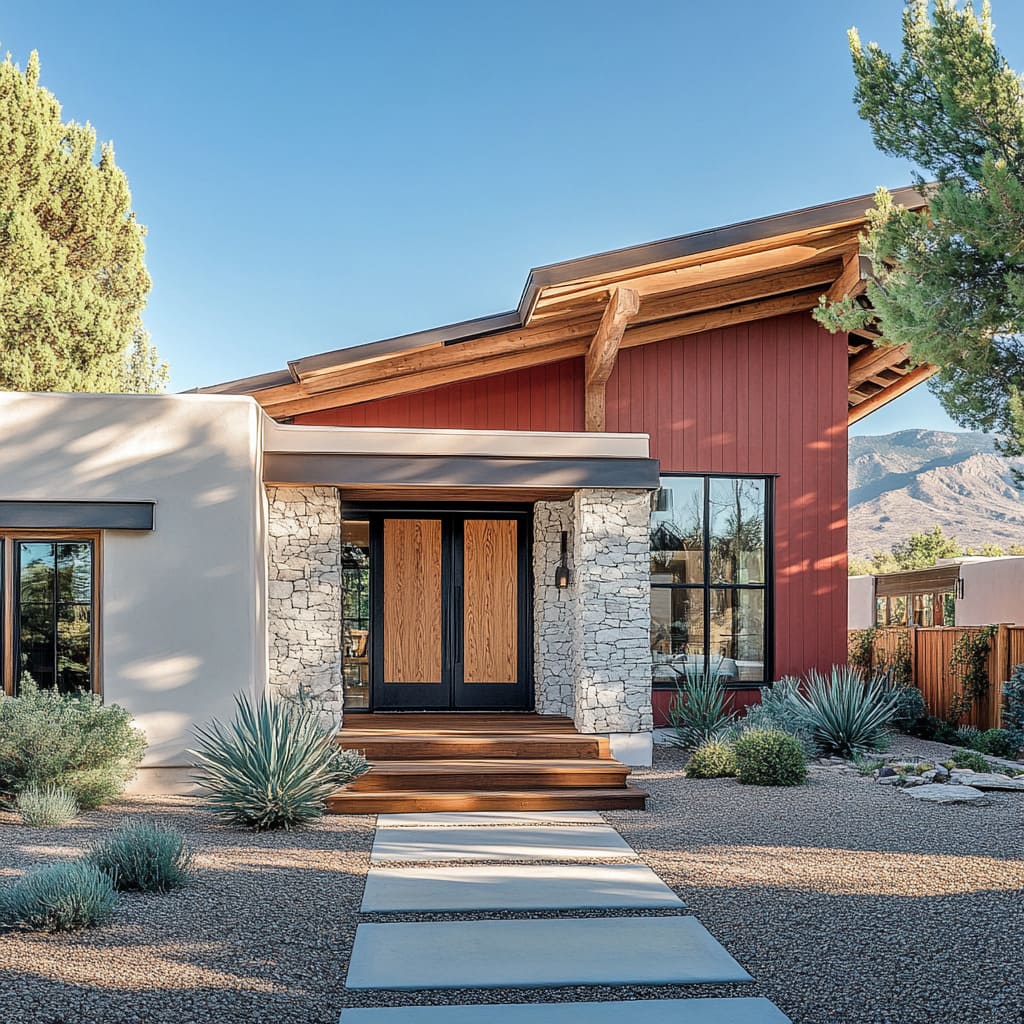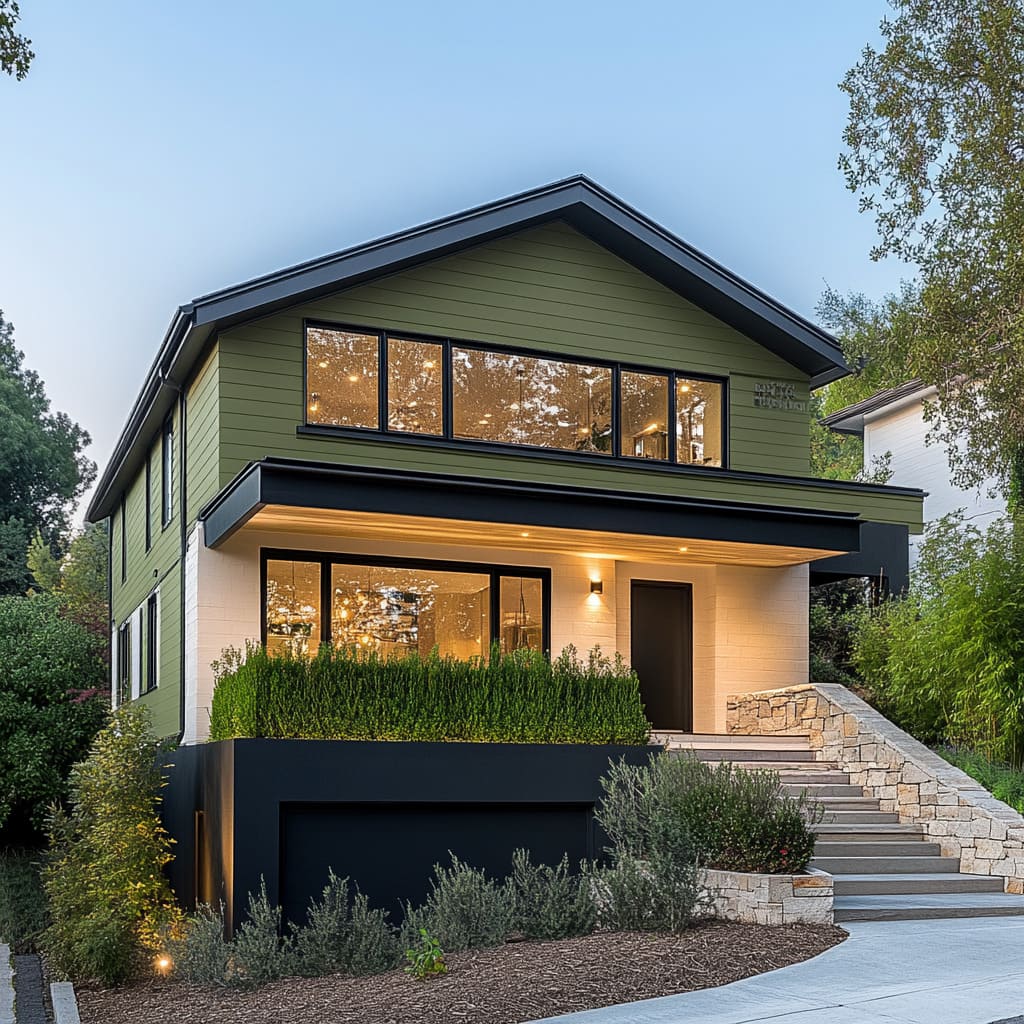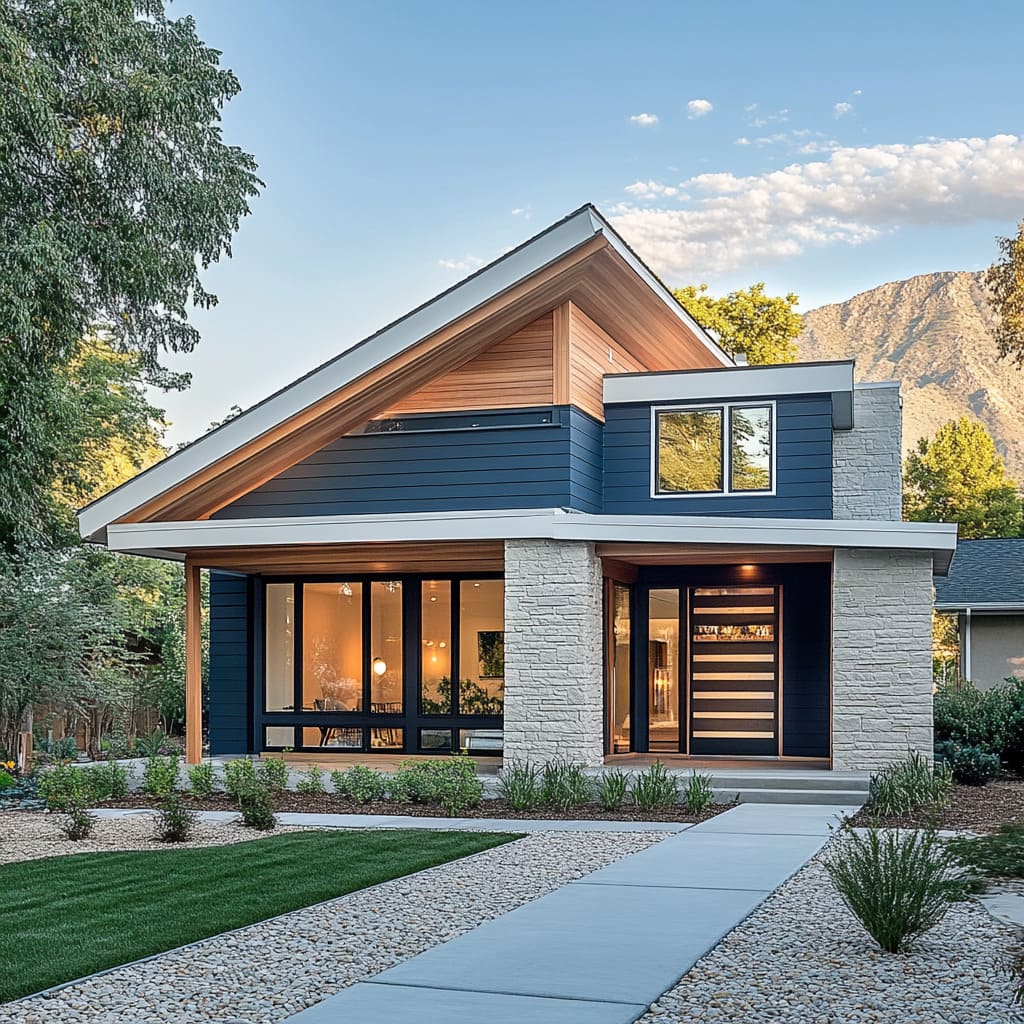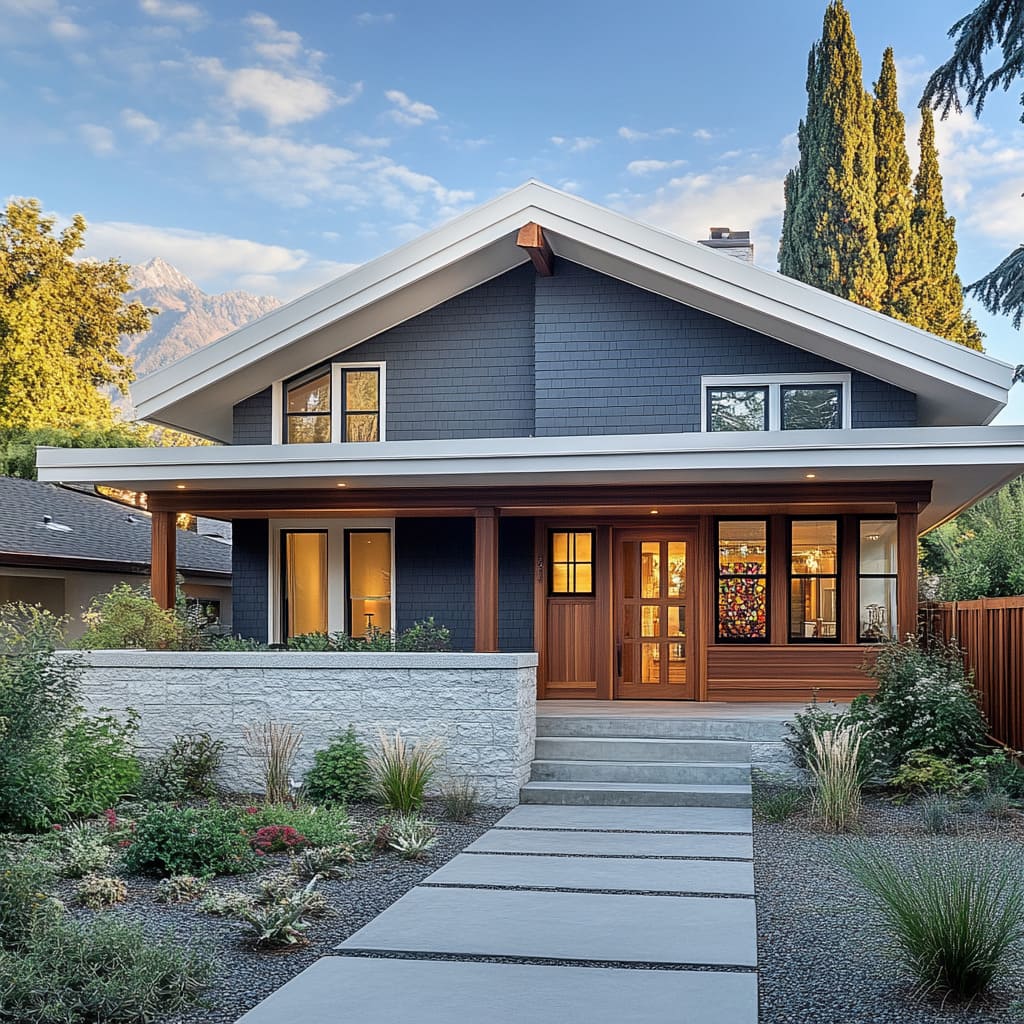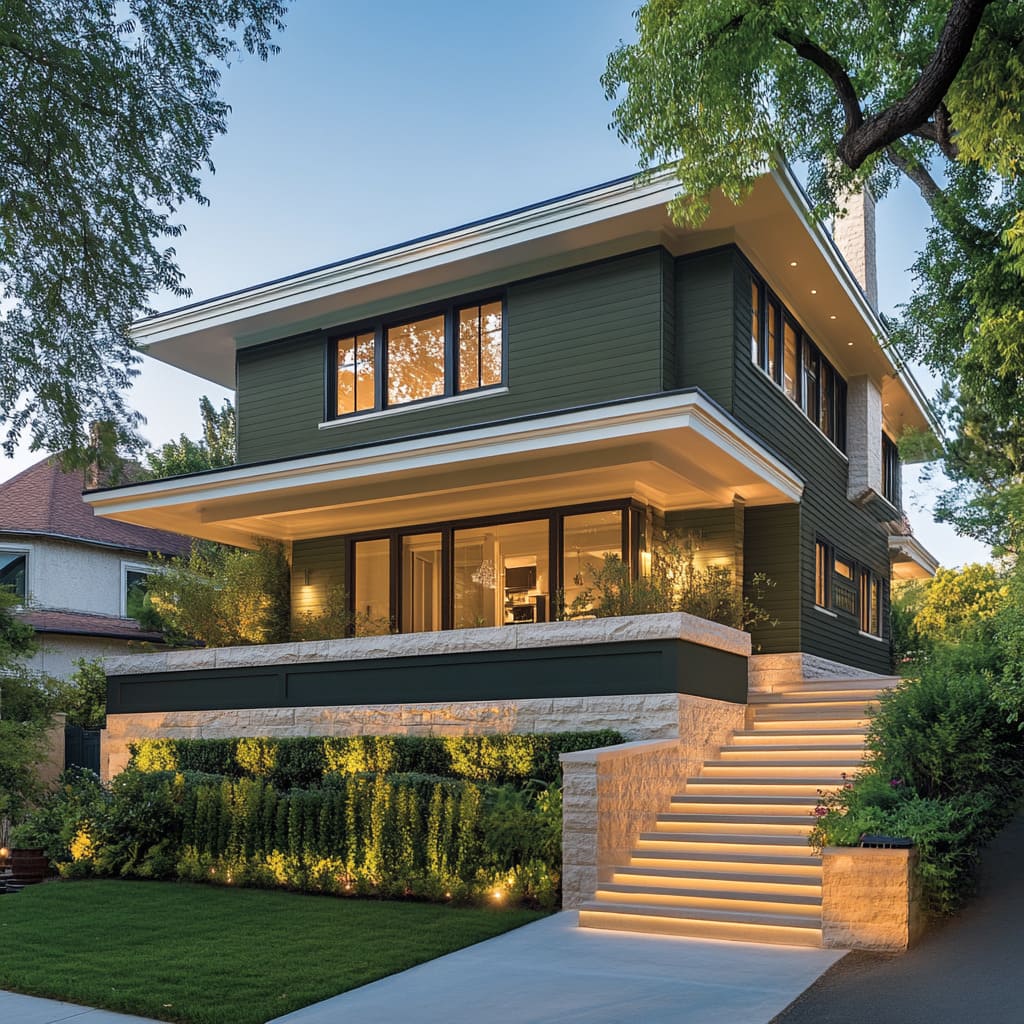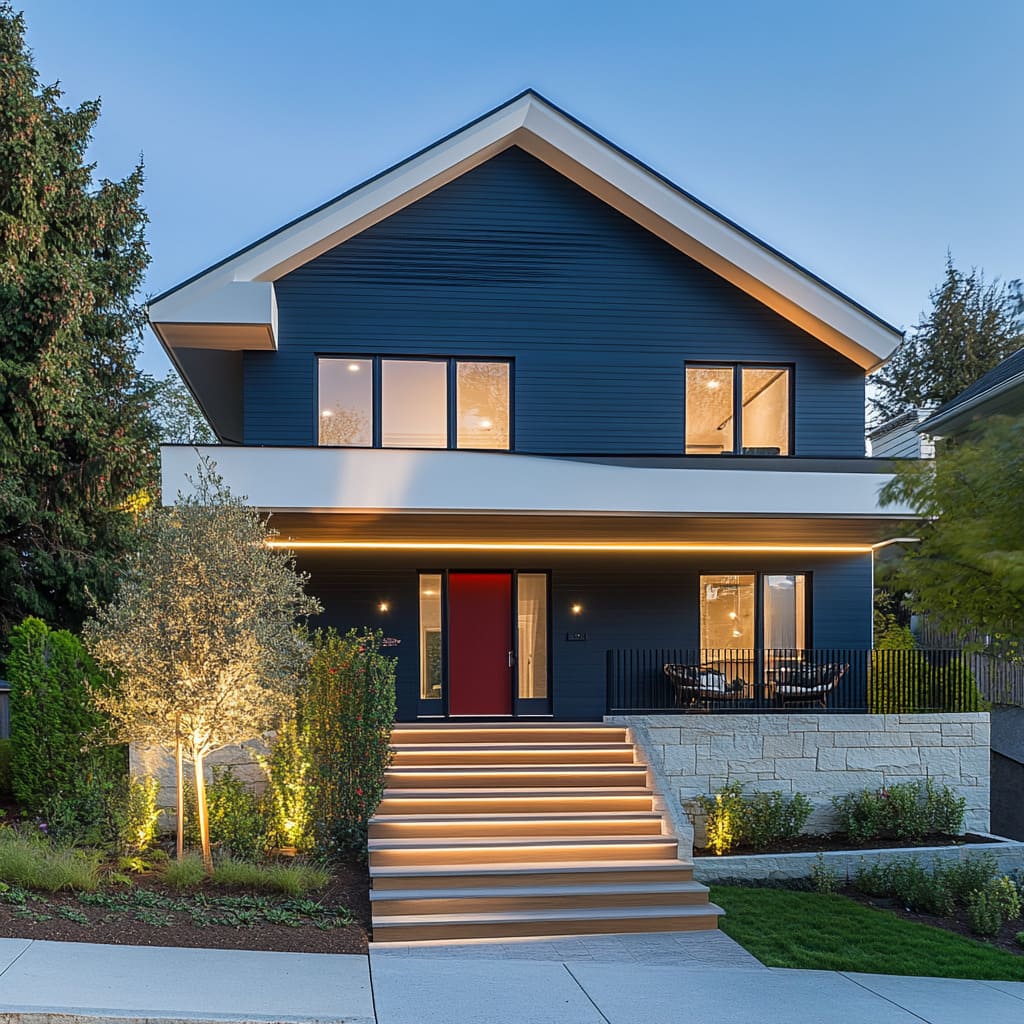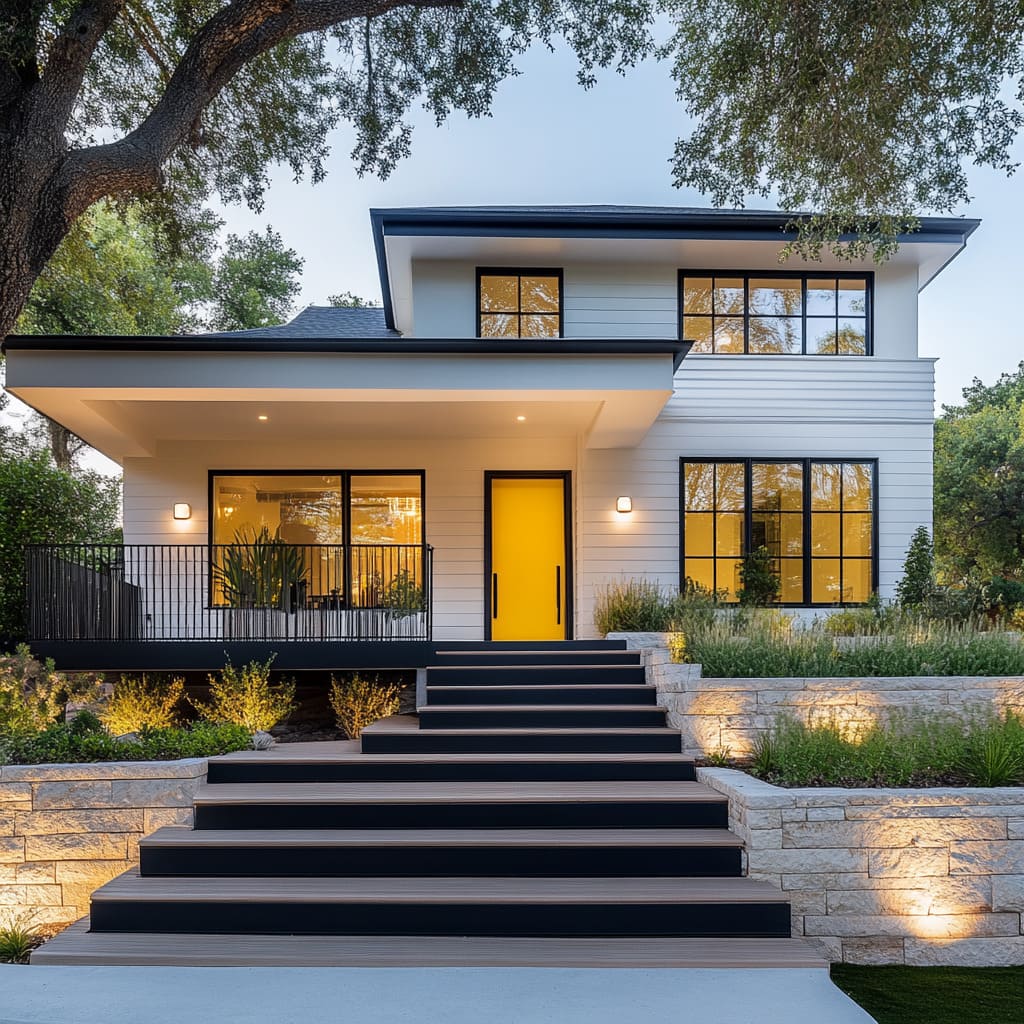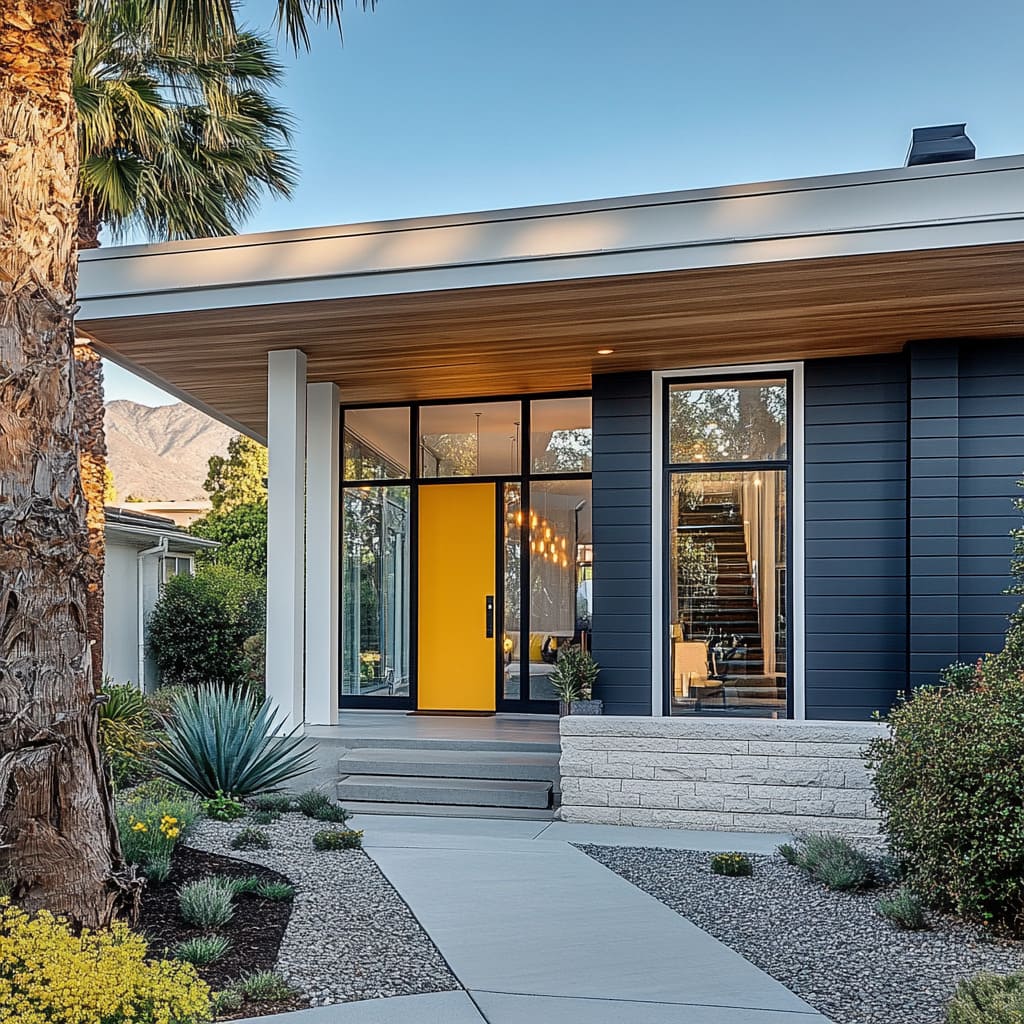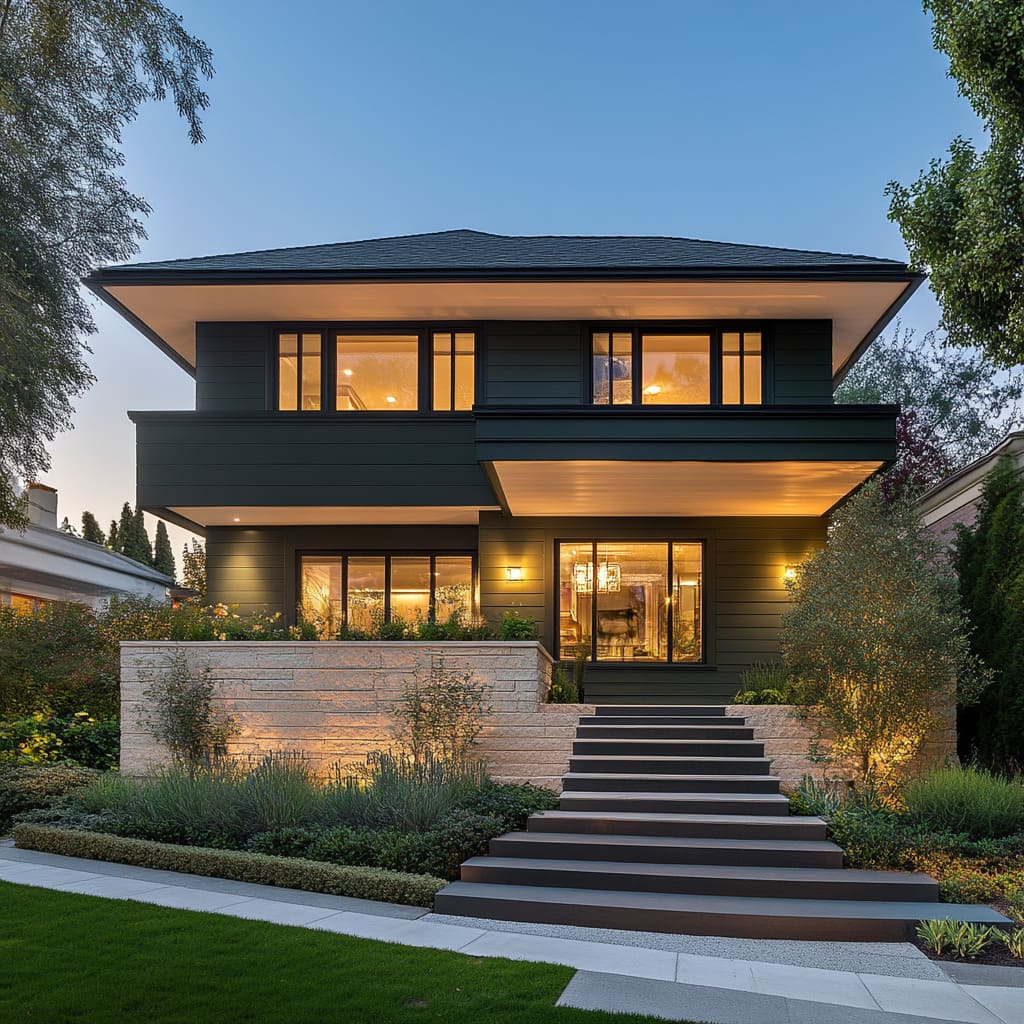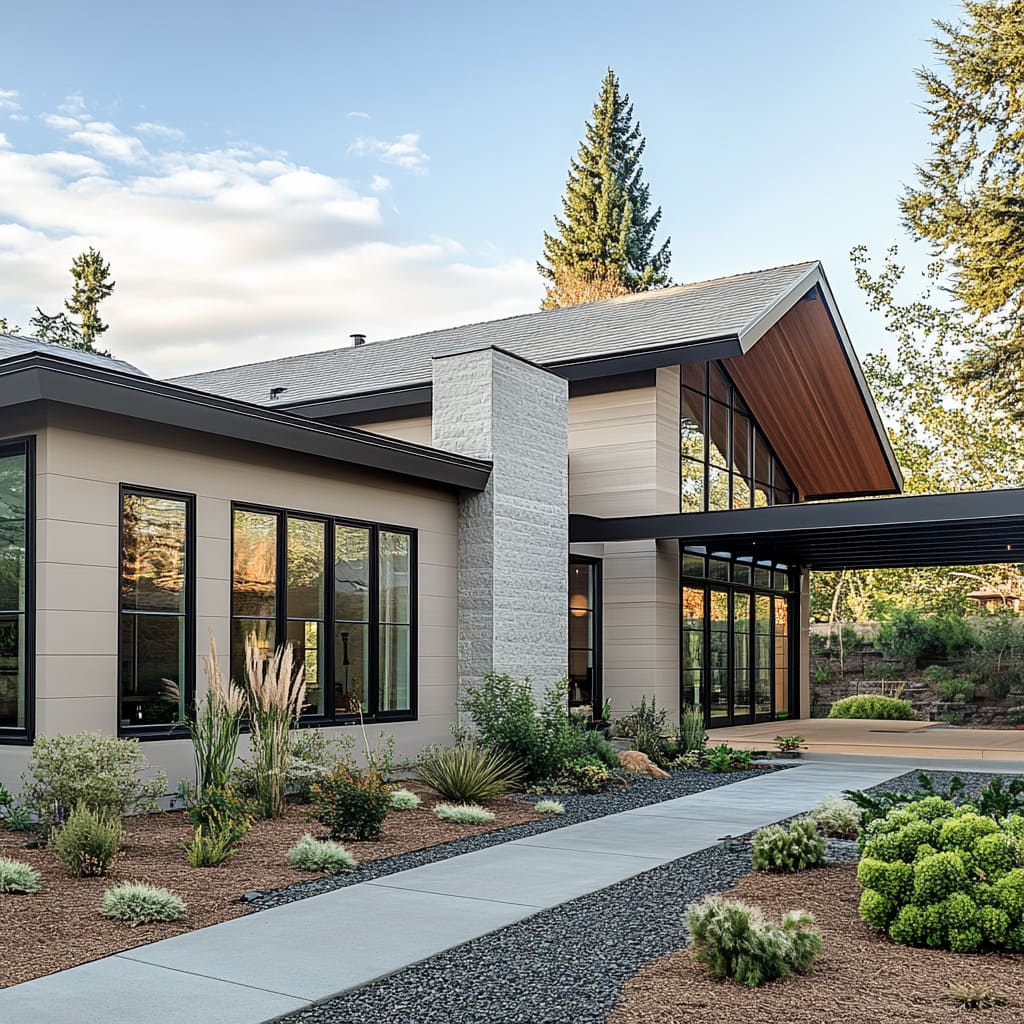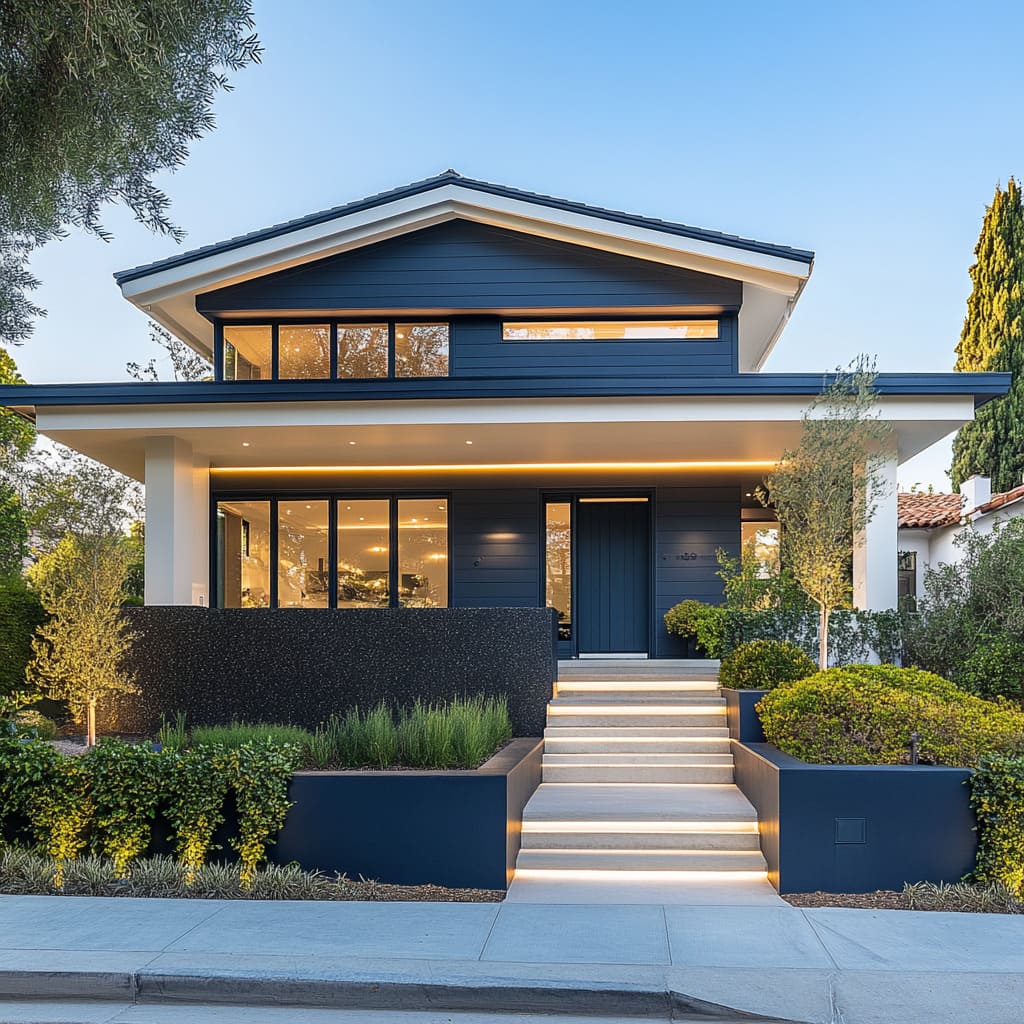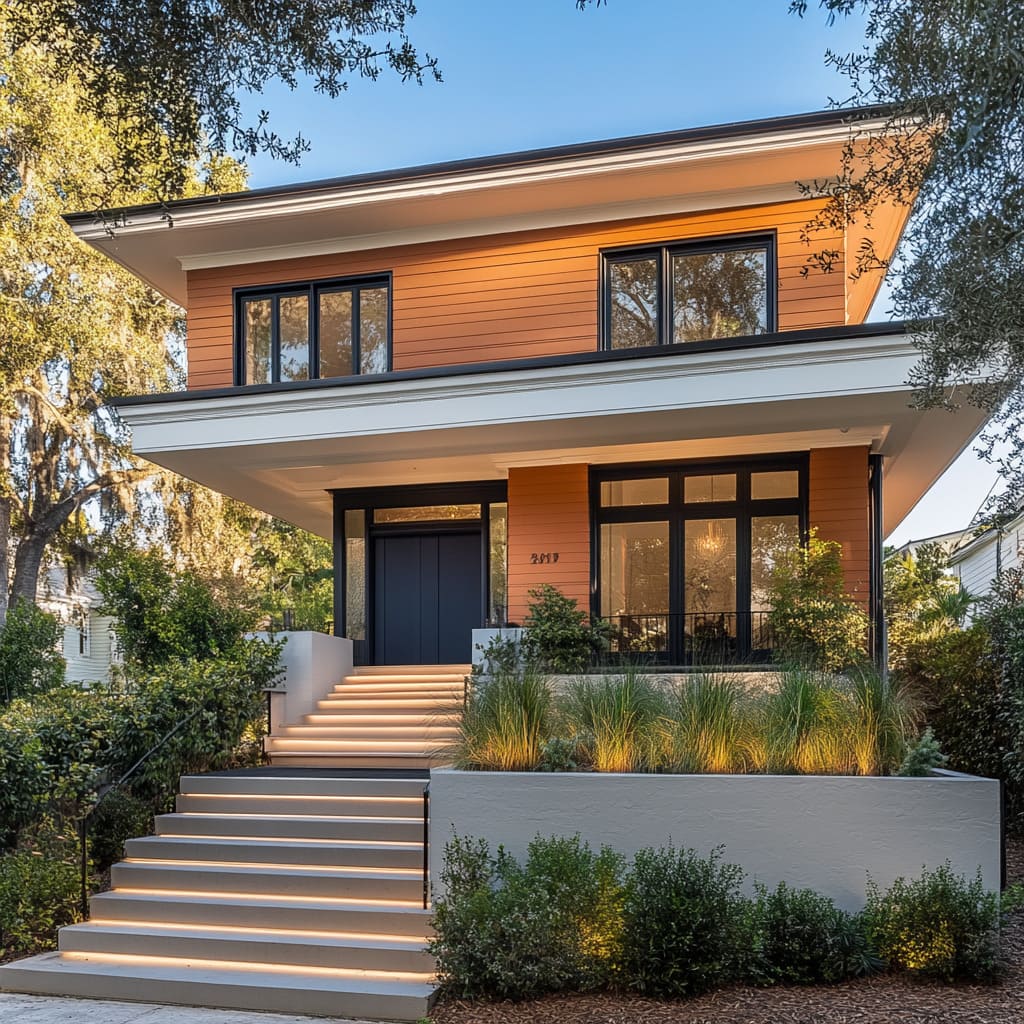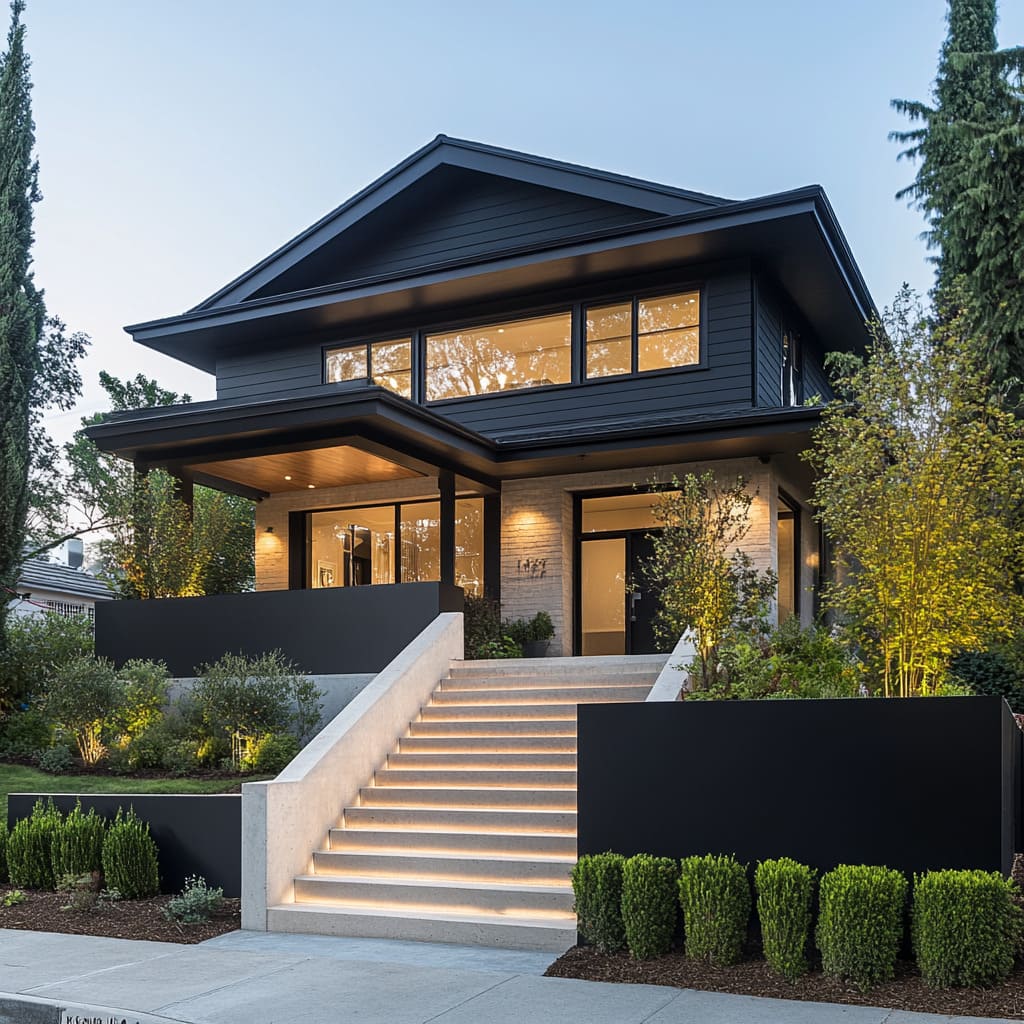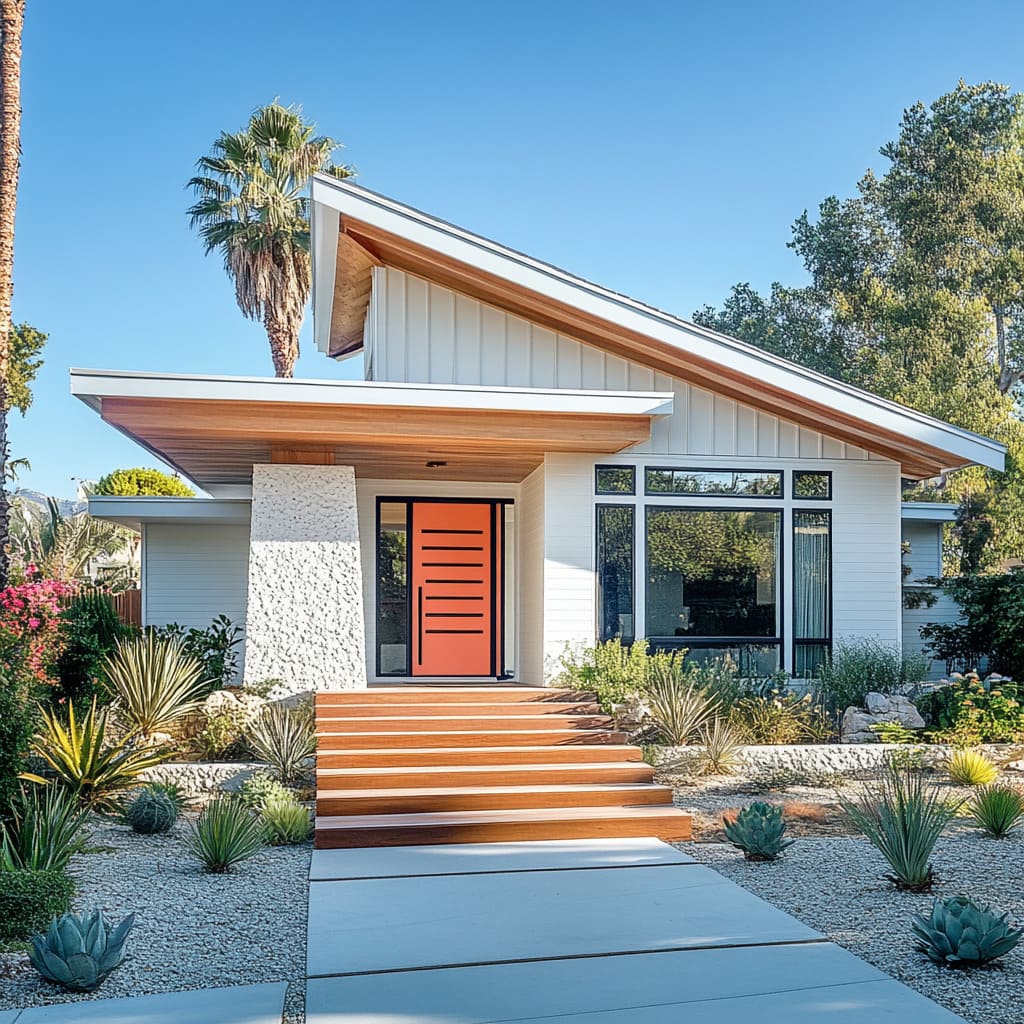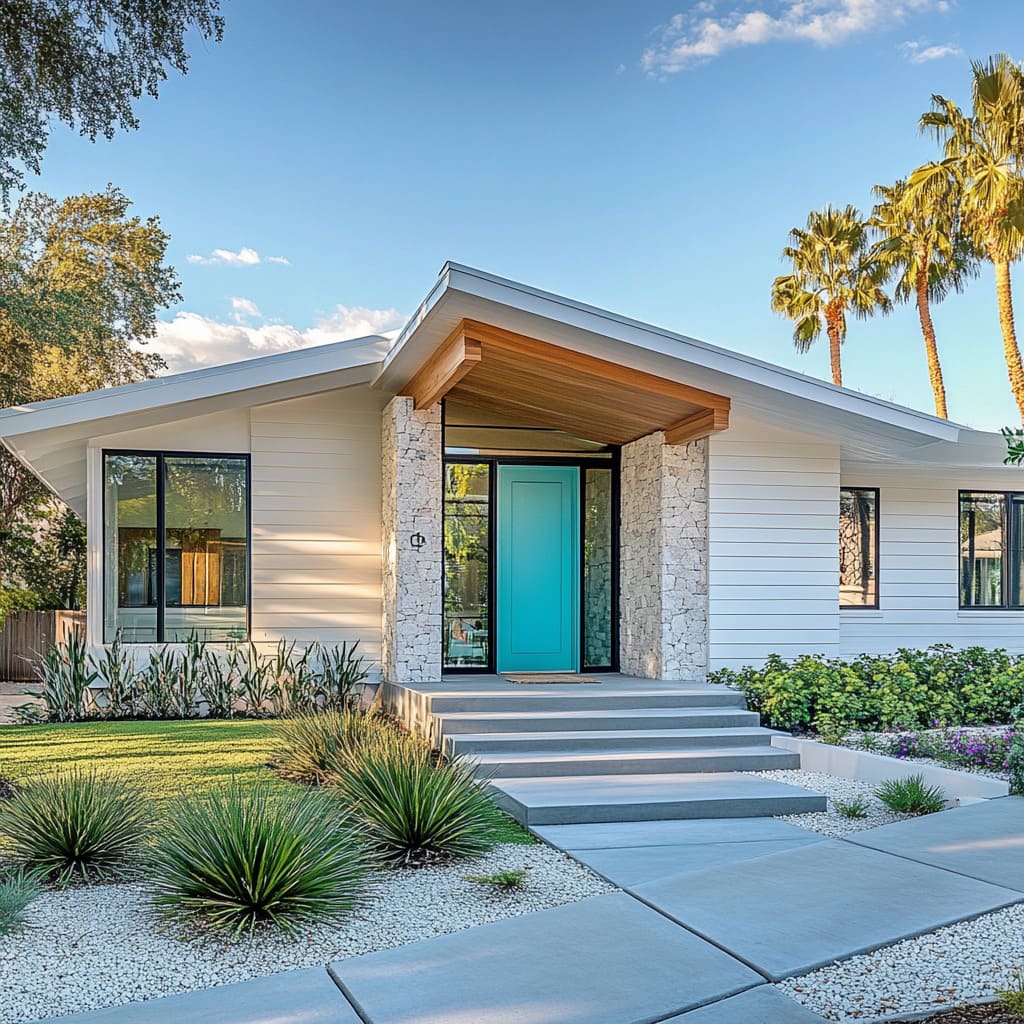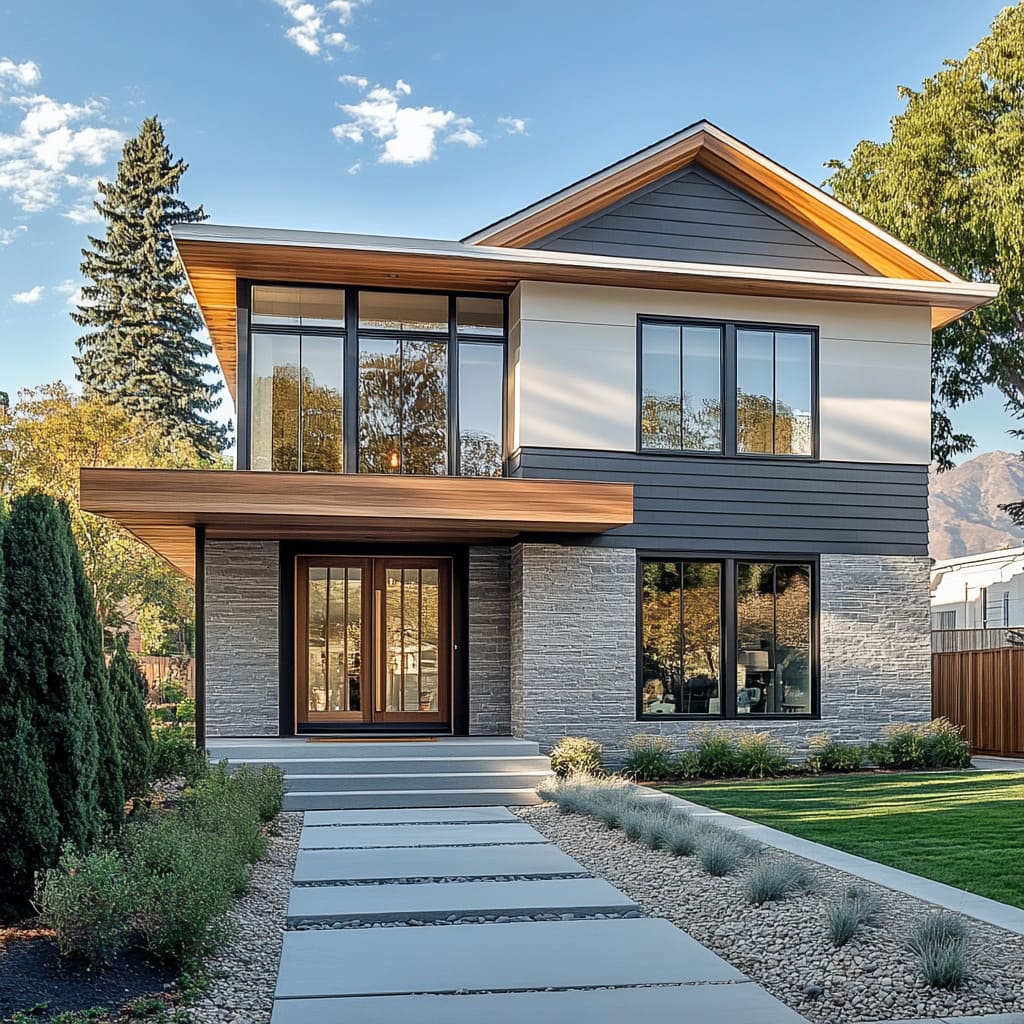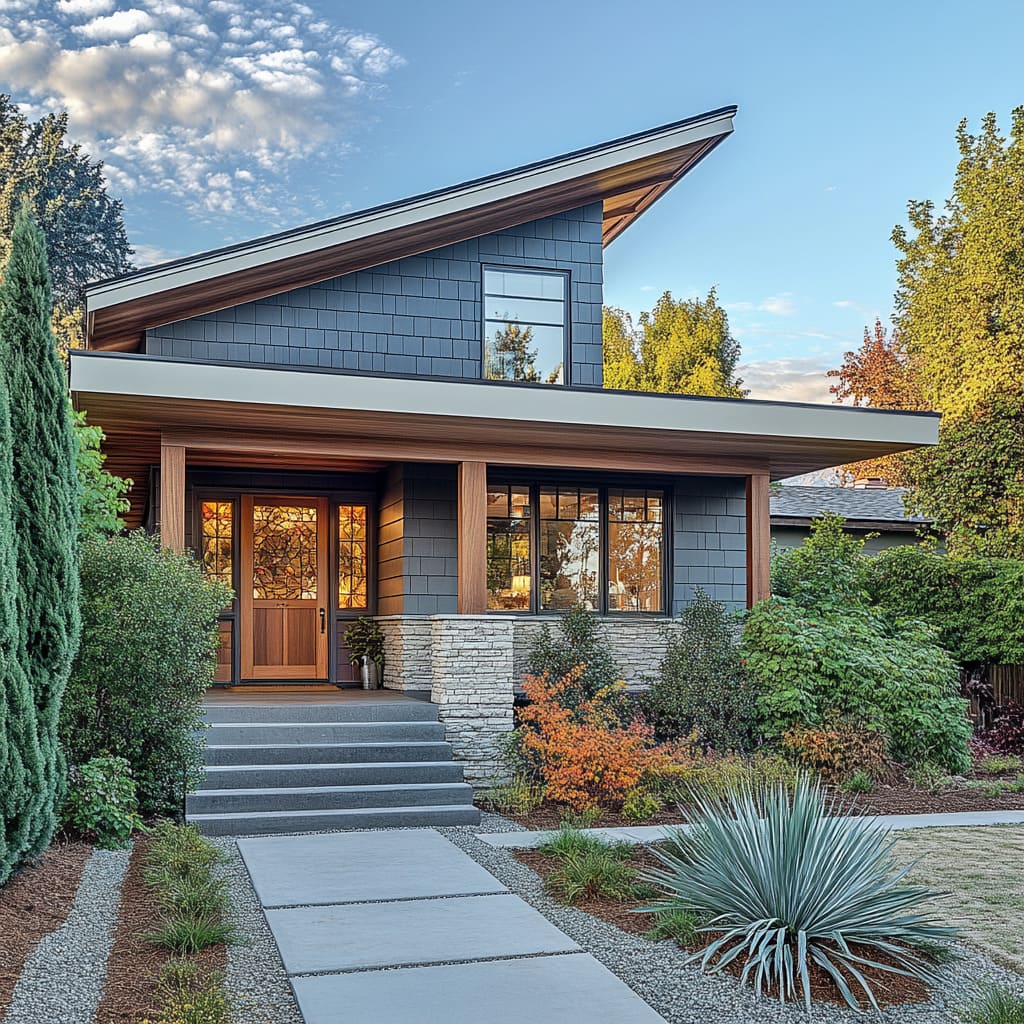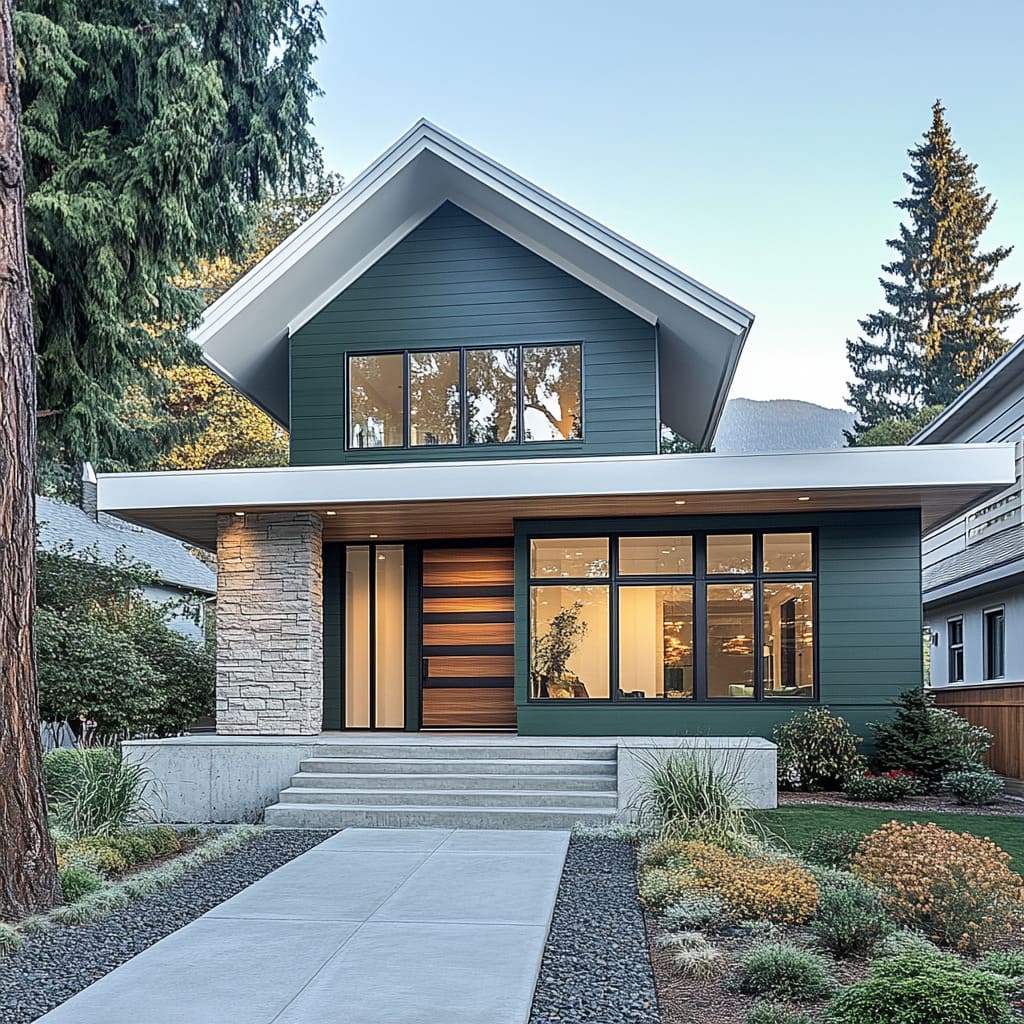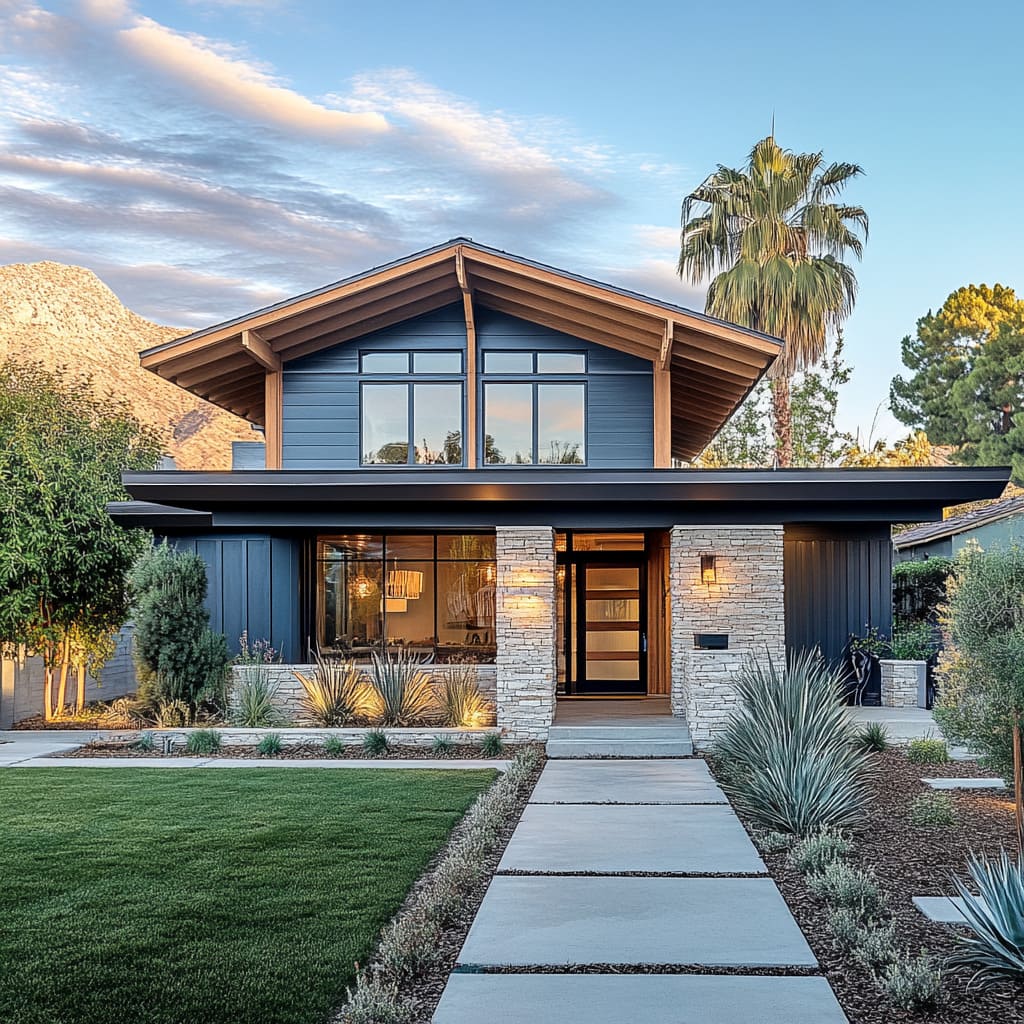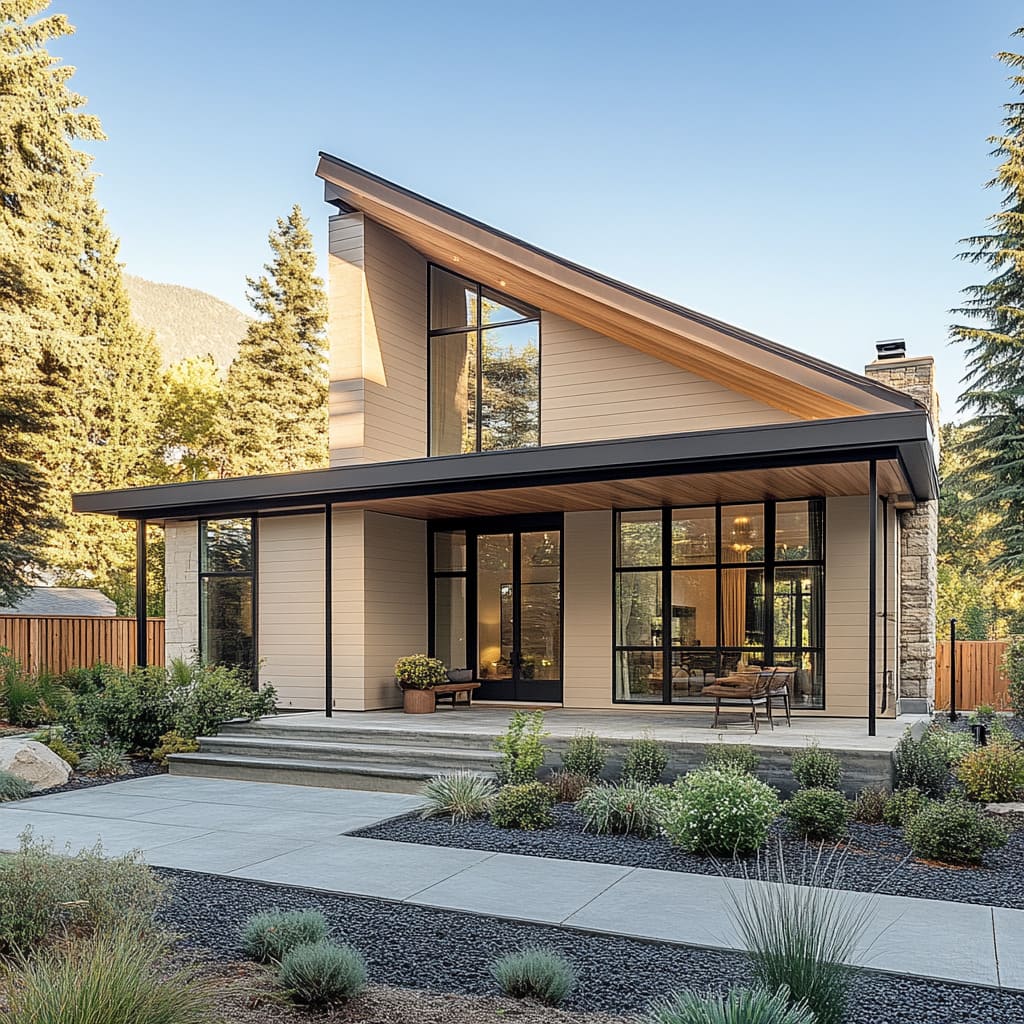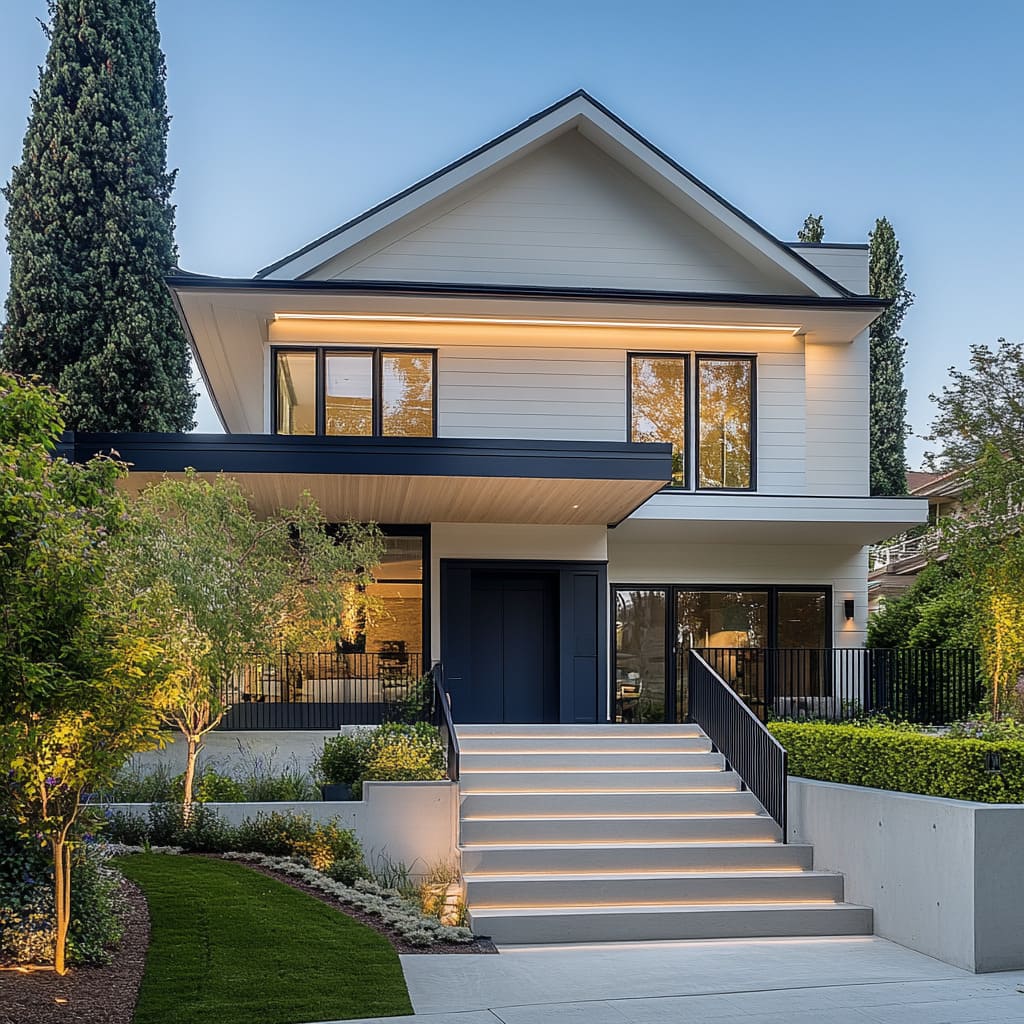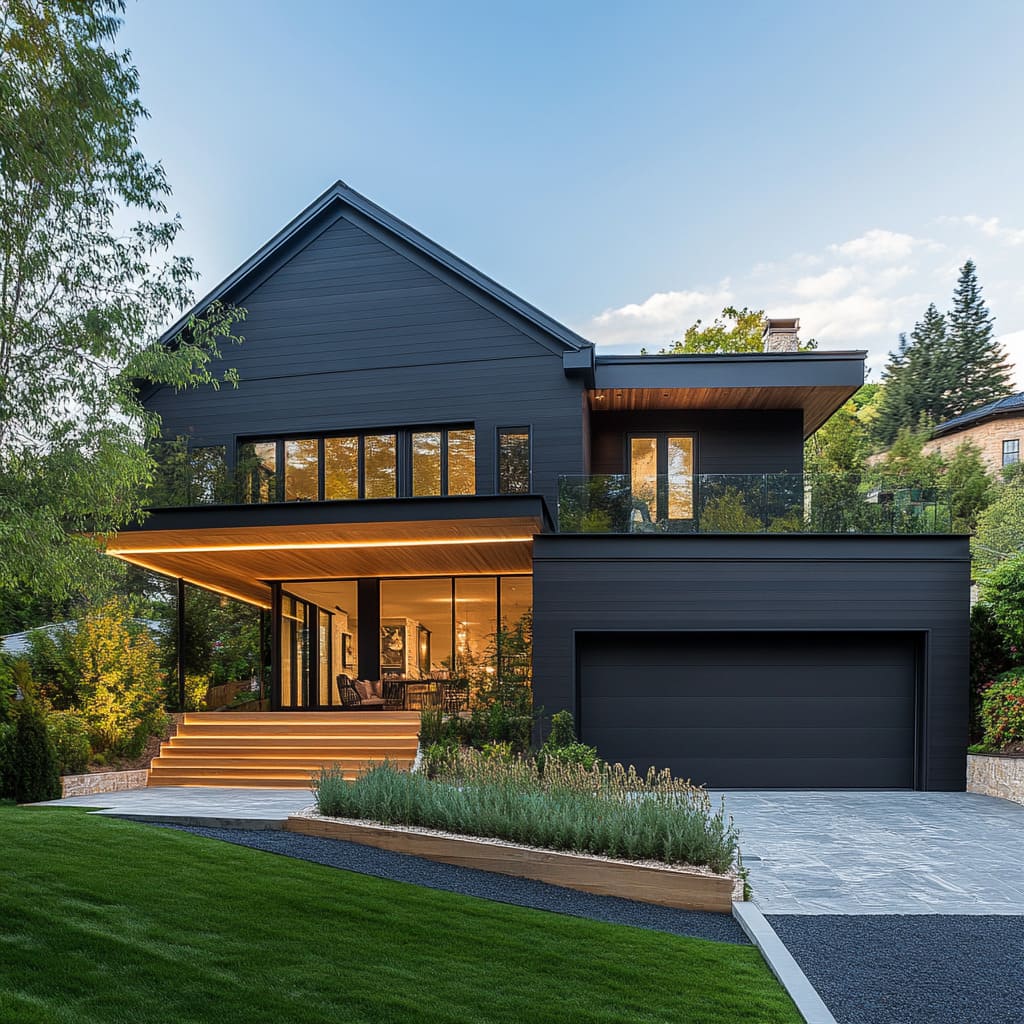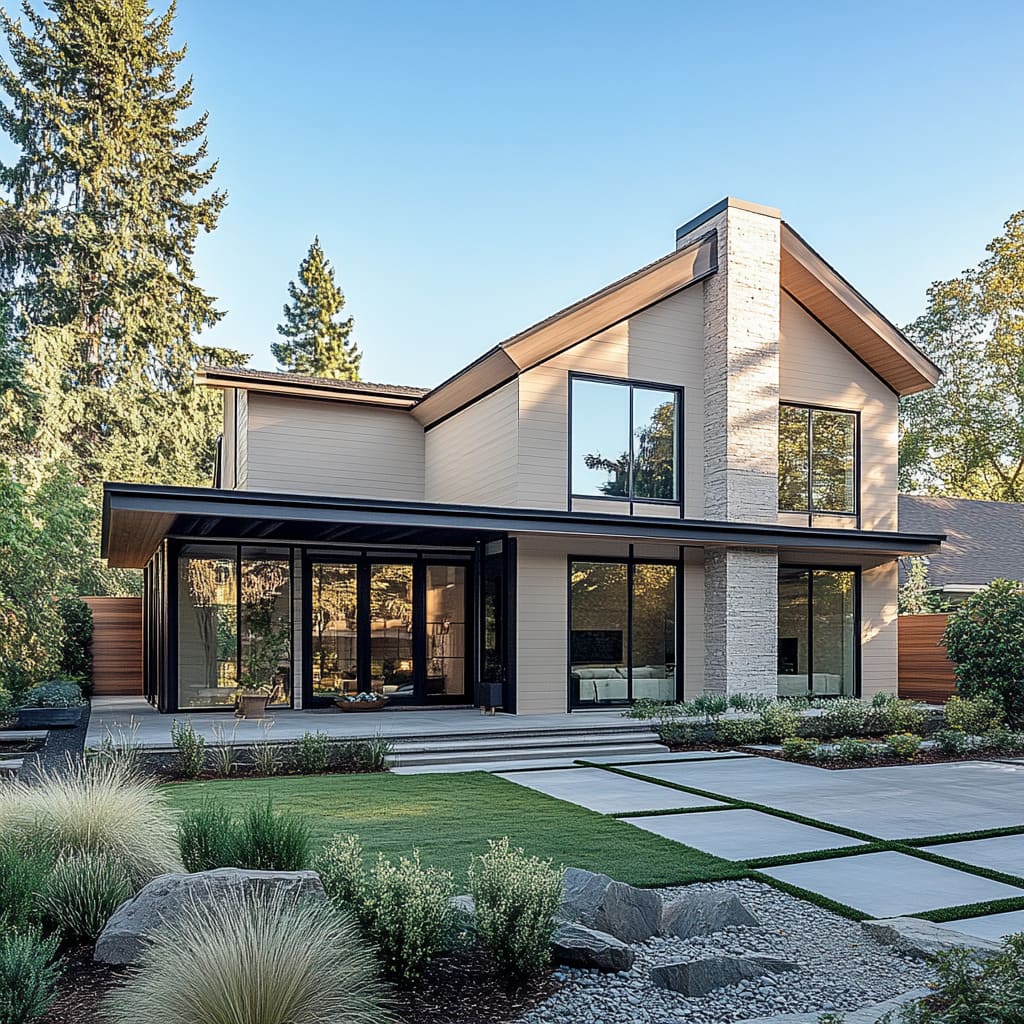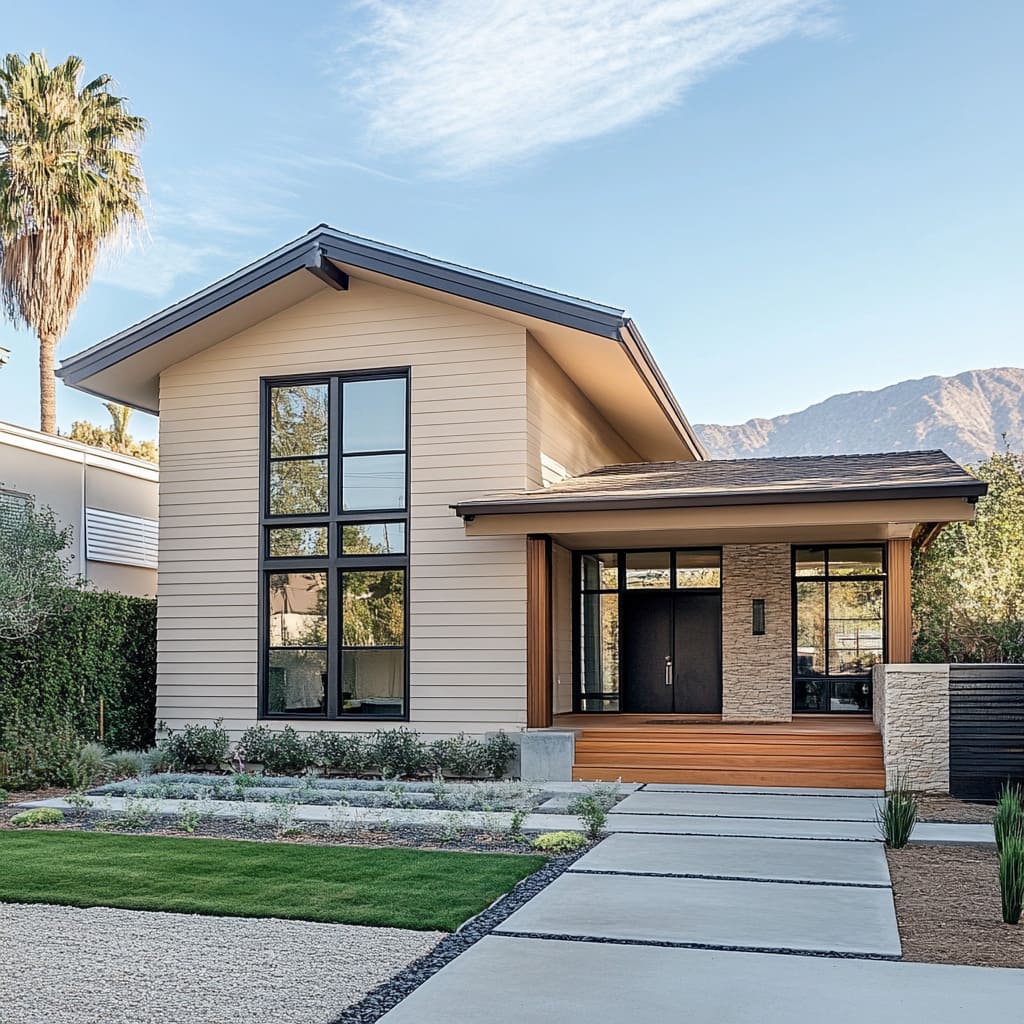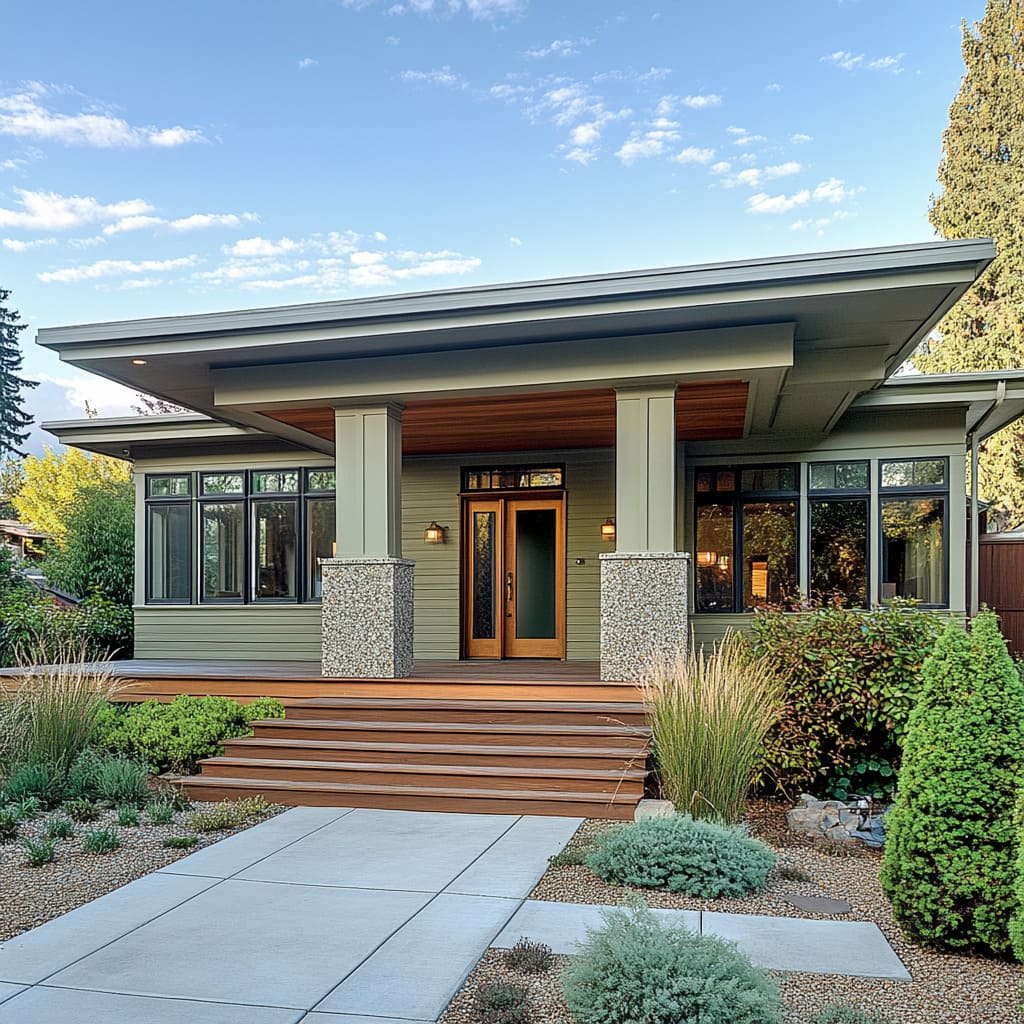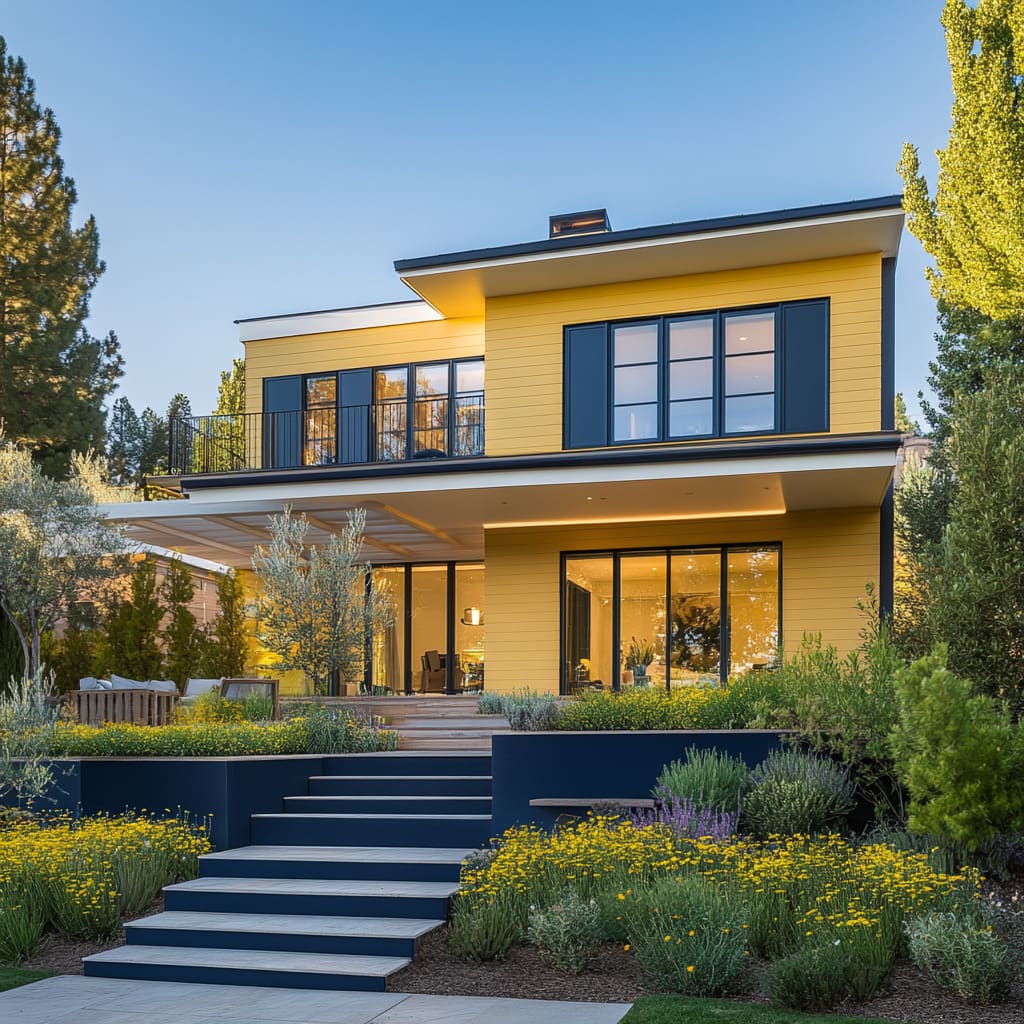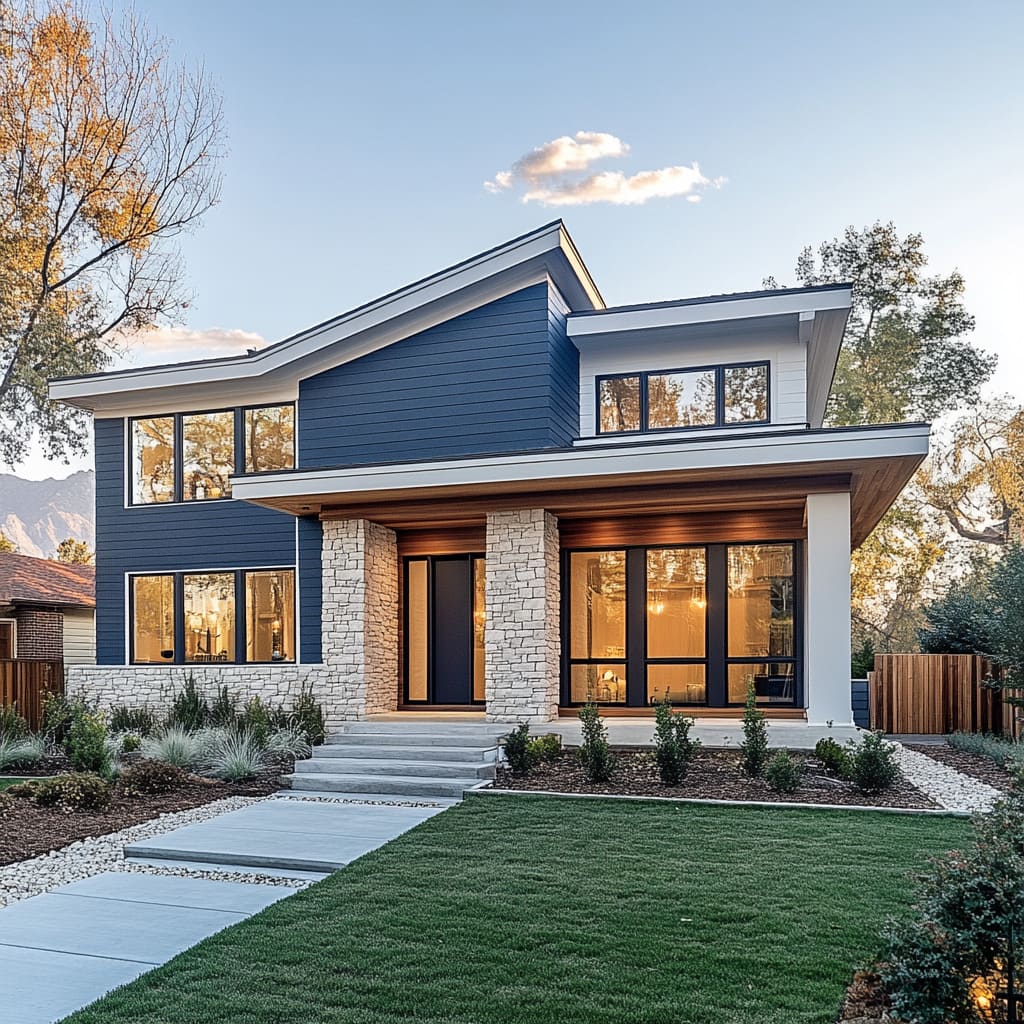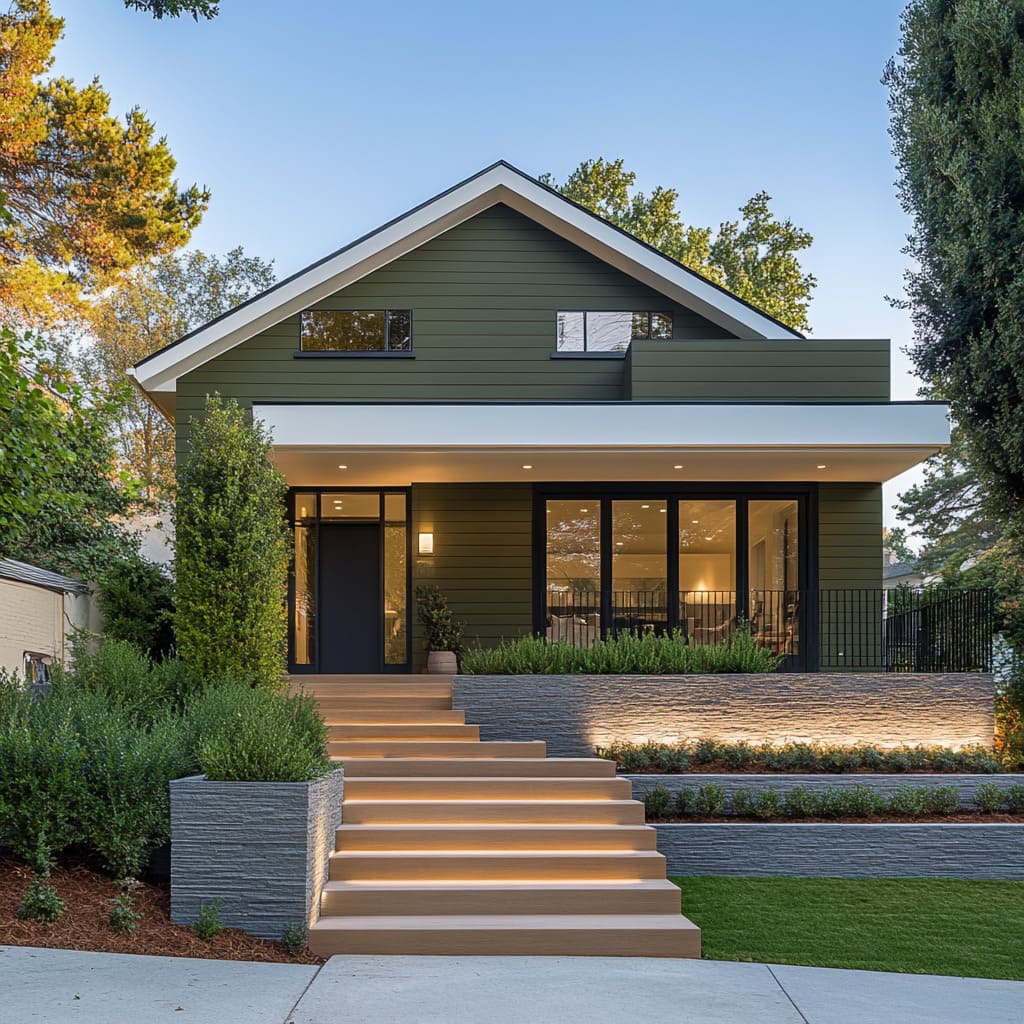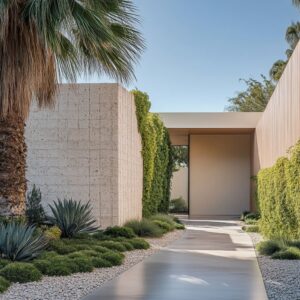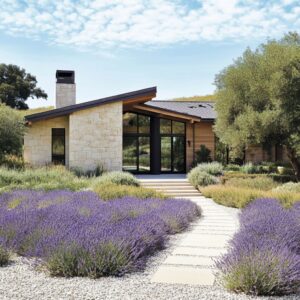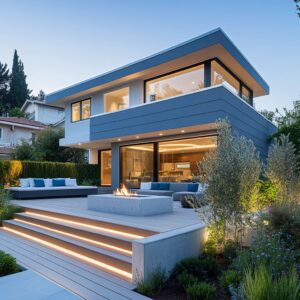Transforming a Craftsman-style house into a sleek, modern home requires a mix of thoughtful design, practical updates, and a strong vision for blending classic charm with contemporary aesthetics. In this guide, we’ll explore key elements and strategies that bring new life to a Craftsman-style house design while making it stand out with a stylish, modern edge.
Architectural Adjustments for a Modern Appeal
One of the most transformative steps in craftsman home remodeling is reimagining the architectural framework. Craftsman homes are known for their cozy, timeless charm, but to introduce a contemporary flair, subtle yet impactful changes to the structure are essential.
Roofline Modernization
The traditional low-pitched gable roof, a hallmark of Craftsman homes, can be redefined to create a sharper, more modern profile. By slightly elevating the roofline or introducing additional angles, the home achieves a more dynamic and visually appealing structure.
Overhanging eaves, which are integral to Craftsman designs, can be enhanced with minimalistic soffits and recessed lighting. These additions maintain the original character while adding modern sophistication.
Simplifying Ornamentation
Craftsman homes often feature decorative beams, corbels, and brackets that showcase skilled craftsmanship. However, to achieve a modern style, these details can be simplified.
Replacing ornate features with clean lines and smooth finishes creates a contemporary look without compromising the house’s integrity. For example, modern soffits and fascia boards with concealed joints streamline the appearance, offering a sleek aesthetic while retaining the Craftsman essence.
Extended Porches for a Contemporary Touch
The porch is a central element of a one-story Craftsman home, and expanding its footprint is a brilliant way to add a modern feel. Whether extended horizontally to accommodate a seating area or vertically with slim metal supports for a floating effect, the porch becomes a space that is functional and stylish.
Incorporating larger glass openings or removing traditional porch columns in favor of minimalist designs enhances the openness, bringing the outside in.
Integrated Overhangs
Overhangs above windows or entryways are not just functional but can also be a bold design statement. Modern overhangs blend geometric shapes with integrated LED lighting, framing the house with an architectural glow that highlights its structure.
These features add depth and character while emphasizing the clean lines associated with contemporary architecture. By carefully implementing these updates, you can transform your Craftsman-style home into a stunning, modern space while keeping its historic charm intact.
Whether you are inspired by architectural trends across the U. S.
or simply want to modernize your home for a fresh look, these strategies offer a strong foundation for creating something truly special.
Materials and Finishes for Modernized Craftsman Homes
In remodeling single-level Craftsman-style homes or multi-story counterparts, the choice of materials and finishes plays a crucial role in balancing modern aesthetics with traditional elements. The right combination can redefine a Craftsman home, introducing layers of texture, color, and depth while staying true to its heritage.
Facade Cladding: A Fusion of Classic and Contemporary
One of the standout ways to modernize a Craftsman facade is through innovative cladding techniques. Vertical paneling has emerged as a popular choice, often crafted from fiber cement, composite, or metal.
These materials create a clean, streamlined appearance while offering durability and weather resistance. Vertical lines also contrast beautifully with the horizontal emphasis found in traditional Craftsman homes, giving the exterior a fresh dimension.
Pairing materials is another transformative strategy. For instance, combining natural stone like limestone or slate with smooth stucco or rich wood panels results in a layered, sophisticated facade.
The juxtaposition of rough and smooth textures creates visual interest, while the warmth of natural elements ensures the home retains its inviting charm. This approach is particularly effective in Craftsman house designs that aim to strike a balance between past and present.
Color choices also contribute to the modern appeal. Neutral and monochromatic palettes dominate, with dark blues, grays, or greens providing a bold foundation.
These are often paired with crisp white trims to soften the look and highlight architectural details. Matte finishes enhance the understated elegance, allowing the materials to speak for themselves without unnecessary gloss or shine.
Windows and Doors: Framing the Modern Look
Windows and doors are the eyes and entry points of a house, making their design critical to achieving a modernized Craftsman aesthetic. Black-framed windows, particularly oversized ones with grid designs, introduce a sleek, industrial-inspired look.
Beyond their aesthetic value, these windows flood interiors with natural light, ensuring that the home feels open and airy. Front doors serve as a focal point, and modern updates often lean toward pivot or panel-style doors in striking hues.
Mustard yellow, deep red, or vibrant teal are popular choices that inject personality and modern flair into the design. These bold colors stand out beautifully against neutral facades, providing an unexpected yet harmonious contrast.
The minimalist detailing of these doors aligns perfectly with the simplicity of modern design, ensuring they don’t overshadow other elements.
Lighting Integration: Highlighting Key Features
Thoughtfully integrated lighting enhances both the function and form of a modernized Craftsman home. Linear LED strips are a favored choice, often installed under eaves, along steps, or even around architectural accents.
These lights create a subtle glow that highlights the structure’s clean lines and adds a touch of sophistication during evening hours. Wall-mounted fixtures with geometric designs further enhance the home’s exterior.
These fixtures, whether sleek black sconces or brushed metal accents, act as understated highlights that blend seamlessly into the design. Their placement around doors, windows, or along pathways ensures both practical illumination and an artistic touch.
Modernizing a Craftsman home with these materials and finishes allows for a harmonious blend of timeless charm and contemporary style. By carefully selecting vertical paneling, mixed materials, and bold windows and doors, along with integrating creative lighting, homeowners can create a design that feels fresh while respecting the Craftsman legacy.
With these strategies, even the simplest elements become part of a cohesive and striking transformation.
Front Yard Landscaping for a Modernized Craftsman Aesthetic
Updating the front yard of Craftsman-style bungalow homes is a perfect way to complement a remodel while maintaining the seamless balance between classic charm and modern design. A well-designed landscape not only enhances curb appeal but also sets the tone for the updated aesthetics of the home itself.
By focusing on geometric layouts, thoughtful plant selection, and innovative outdoor features, the yard becomes a functional extension of the house’s reimagined style.
Geometric Landscaping: Clean Lines and Structured Design
Modern front yards often emphasize simplicity and structure, achieved through geometric hardscaping. Concrete pathways in square or rectangular designs are a cornerstone of this approach, creating an organized flow.
These paths can be interspersed with gravel to break up the monotony, adding a textural contrast. The clean lines of these paths echo the minimalism seen in contemporary Craftsman updates, offering a cohesive look from the house to the yard.
Elevated planter boxes crafted from metal or concrete are another key element, serving as eye-catching focal points. These planters can frame walkways, accentuate entrances, or delineate different zones of the yard.
The mix of industrial finishes like brushed metal and natural elements like greenery bridges the gap between modern minimalism and the natural focus of traditional Craftsman homes.
Plant Selection: Low-Maintenance Beauty with Textural Variety
Choosing the right plants ensures that the front yard remains visually engaging while being practical. Drought-tolerant and evergreen plants such as lavender, rosemary, boxwoods, and olive trees are particularly suited to achieving this balance.
These species not only offer year-round greenery but also add layers of texture, from the soft spires of lavender to the dense, structured forms of boxwoods. Layered planting is essential for depth and interest.
Shorter shrubs like dwarf ornamental grasses or sage can be placed in the foreground, while taller elements such as cypress trees or a Japanese maple add verticality and drama. This staggered arrangement draws the eye naturally across the yard, creating a sense of fullness without overcrowding.
Multi-Zone Design: Function Meets Aesthetic
Dividing the front yard into distinct zones creates both visual interest and functional spaces. For instance, a seating area framed by architectural elements like pergolas or trellises provides a space for relaxation while maintaining the Craftsman emphasis on integrating with nature.
These features can be further softened with climbing plants, tying them back to the landscape. A small fire pit zone can serve as an inviting focal point, particularly when surrounded by low-profile seating or decorative gravel.
Separately, an ornamental garden planted with a mix of native and decorative species ensures the yard remains vibrant while requiring minimal upkeep. Together, these zones give the space a thoughtful flow that combines usability with striking design.
Outdoor Features: Subtle Enhancements for a Contemporary Edge
To add a sense of refinement, modern outdoor features like water elements are a must. Minimalist fountains or reflective pools lend a sophisticated touch while maintaining a connection to Craftsman traditions of celebrating natural elements.
These features also provide gentle soundscapes, enhancing the overall ambiance of the space. Raised garden beds made of wood or concrete extend outdoor usability, allowing for the cultivation of plants or herbs.
These beds also subtly connect the yard to the home’s historical roots, as gardening was often a staple of Craftsman-style living. Combined with a well-placed pergola or trellis, these additions create a balanced design that embraces both form and function.
Transforming a yard into a modern masterpiece is an essential part of a Craftsman-style remodel, ensuring the exterior matches the stylish updates of the house. By combining geometric landscaping, diverse planting strategies, functional zones, and carefully chosen features, a Craftsman yard can be as timeless as it is contemporary.
This approach respects the home’s heritage while embracing a bold and modern vision for its future.
Design Details that Make the Look Contemporary
When updating a traditional Craftsman home, the magic often lies in the details. Thoughtful design adjustments and subtle refinements create a modern edge while preserving the timeless charm of the original style.
By focusing on lighting, trim updates, and the interplay between symmetry and openness, a Craftsman house remodel can seamlessly transition into a contemporary aesthetic.
Lighting Design: Layers of Atmosphere
Modern lighting design is integral to emphasizing the architectural features of a Craftsman-style home. Layered lighting introduces depth and character to the exterior, serving both functional and decorative purposes.
Uplighting directed toward trees or shrubs in the yard can bring attention to natural elements, adding an organic elegance. Meanwhile, step lights embedded into pathways or staircases offer safety and a touch of sophistication, casting a warm glow that defines clean lines in the hardscape.
Wall-mounted sconces or recessed lights can strategically highlight key architectural elements, such as porch columns or window frames. Opt for fixtures with sleek, geometric shapes or black finishes to contrast with the traditional Craftsman palette.
This interplay between natural and artificial light creates dynamic visuals, especially during evenings, ensuring that the home feels welcoming and stylish.
Simplified Trim and Molding for Modern Appeal
The classic Craftsman design often includes intricate trims and moldings, which can be streamlined for a more contemporary look. Replacing ornate trims with flat, wide boards painted in contrasting colors achieves a clean and bold aesthetic.
For example, pairing dark trim with lighter siding creates visual definition without overwhelming the facade. The simplicity of these updates aligns with modern design principles while subtly honoring the house’s traditional roots.
Another impactful change involves updating soffits and fascia boards. Opt for smooth finishes with concealed joints to enhance the streamlined appearance.
This detail, while seemingly minor, has a significant effect on the overall impression of the home, offering a polished and cohesive look.
Balancing Symmetry and Asymmetry
Traditional Craftsman homes are known for their balanced and symmetrical facades. While maintaining this balance is essential, introducing asymmetry can infuse a fresh and contemporary twist.
Consider incorporating varied window sizes or adding a cantilevered extension that juts out slightly, breaking the monotony of uniformity. For instance, an offset window paired with vertical siding can add depth and intrigue without disrupting the overall harmony of the structure.
The key to successfully blending symmetry and asymmetry is ensuring visual balance. For example, if a larger window is placed on one side of the facade, offset it with a smaller window or accent detail on the opposite side.
This approach respects the Craftsman tradition of intentional design while exploring modern creativity.
Open-to-Closed Transitions: A Blend of Privacy and Openness
Craftsman homes often feature inviting porches that emphasize connection to the outdoors. Modern updates take this concept further by blending open and semi-private spaces with innovative materials.
Slatted wood or metal privacy screens can frame porches or patios, offering a sense of enclosure while allowing light and air to flow freely. These screens, often arranged in vertical or horizontal patterns, create a modern aesthetic that complements the home’s structure.
For patios or side yards, combining glass railings or low garden walls with greenery ensures a balanced transition from open to private. These elements not only enhance functionality but also add layers of visual interest, reinforcing the modern reinterpretation of the Craftsman ethos.
By focusing on thoughtful design details such as lighting, simplified trims, balanced symmetry, and versatile outdoor transitions, it’s possible to build Craftsman-style home elements into a contemporary vision. These updates blend tradition with innovation, creating a stylish exterior that honors the past while embracing modern trends.
Each design choice, from subtle lighting effects to bold asymmetry, ensures that the Craftsman character remains at the heart of this transformation.
Design Ideas for Modernizing a Typical Craftsman House
Modernizing a traditional Craftsman house involves a delicate balance between respecting its historical charm and introducing elements that align with today’s sleek, contemporary aesthetics. By focusing on key design upgrades, such as a refreshed facade, enhanced entryways, updated outdoor living spaces, and thoughtful landscaping, a Craftsman home can be transformed into a standout example of modern living.
Facade Redesign: Blending Tradition with Sleek Modernity
A striking facade is central to creating a modern Craftsman look. Begin by adopting a monochromatic paint palette, such as charcoal paired with crisp white trims, to introduce sophistication while maintaining a connection to traditional Craftsman style.
Vertical wood or composite paneling can be added to elongate the visual profile of the house, giving it a streamlined and contemporary flair. Replacing outdated windows with black-framed, floor-to-ceiling glass units dramatically transforms the home’s exterior, enhancing its connection to the outdoors.
These oversized windows not only maximize natural light but also introduce an industrial-modern edge. For a cohesive look, ensure that the window frames contrast boldly against the facade while complementing the overall color scheme.
Entryway Transformation: A Bold and Inviting Statement
The entryway is a focal point that sets the tone for the rest of the home. Installing a pivot door in a vibrant hue—such as teal, mustard yellow, or bold red—creates an immediate visual impact.
These doors combine modern aesthetics with practicality, ensuring that the entryway feels fresh and welcoming. Floating steps crafted from concrete or rich wood, enhanced with recessed LED lighting, elevate the entryway design.
This lighting not only highlights the steps for safety but also adds a layer of sophistication to the house during evening hours. Symmetry can be achieved by flanking the doorway with oversized planters filled with structured greenery, such as boxwoods or ornamental grasses, for a clean and balanced appearance.
Outdoor Living Spaces: A Seamless Blend of Function and Style
Modern outdoor living spaces extend the usability of a Craftsman home while enhancing its overall aesthetic. A pergola constructed from sleek white metal or warm-toned wood provides shade and serves as a visual extension of the house.
For added ambiance, string lighting can be woven into the pergola, creating a cozy yet stylish atmosphere. A minimalist fire pit surrounded by modern lounge furniture—featuring clean lines and neutral upholstery—creates an inviting focal point.
Decking made from durable materials like ipe or composite wood adds both visual appeal and long-term functionality, ensuring the space remains stylish for years to come.
Landscaping Overhaul: Sustainable Beauty with Design Focus
Revamping the front yard can dramatically alter the perception of a Craftsman-style house. Replacing traditional grass lawns with xeriscaping techniques minimizes water usage while introducing a modern aesthetic.
Use gravel, drought-tolerant plants such as succulents, lavender, or rosemary, and layered mulch to create texture and visual interest. A pathway made of oversized pavers set within gravel reduces maintenance while contributing to the home’s clean and structured appearance.
Vertical elements like trellises or tall planters can frame the facade, adding depth and drawing the eye upward. These design choices not only emphasize sustainability but also complement the Craftsman tradition of connecting with nature.
Contemporary Roof Accents: Functional and Aesthetic Updates
Upgrading the roof can redefine a typical Craftsman house while ensuring its functionality. Metal roof accents or standing-seam rooflines introduce a subtle industrial touch that pairs beautifully with traditional materials like wood or stucco.
These elements add visual interest and elevate the overall style without overwhelming the home’s charm. Integrating solar panels directly into the roofline is another forward-thinking approach.
By opting for seamless installations, the panels can become part of the aesthetic while providing a modern, energy-efficient solution. This combination of style and sustainability is ideal for those looking to modernize their Craftsman home without compromising its character.
By incorporating these thoughtful updates, a traditional Craftsman home can achieve a modernized aesthetic that balances historical charm with contemporary sensibilities. Whether working with a smaller single-story home or larger Craftsman-style ranch homes, these design ideas can inspire a transformation that feels both stylish and timeless.
Innovative Ideas & Combinations
When reimagining Craftsman home designs, one of the most impactful strategies is blending traditional features with bold modern elements. This approach allows for a visually captivating result that remains respectful of the home’s historical roots while bringing it into the present.
Here are a few transformative ideas to consider.
Juxtaposition of Old and New: Striking the Perfect Balance
A thoughtful way to modernize a Craftsman house is by preserving its iconic stone columns while introducing sleek glass balustrades around them. This combination highlights the craftsmanship of the original design while offering a modern, minimalist counterpoint.
By embracing this contrast, the overall appearance becomes dynamic and engaging, appealing to both traditionalists and lovers of contemporary architecture. Additionally, maintaining original wooden trims or detailing but pairing them with cutting-edge materials like brushed steel for railings or gates creates a cohesive yet unexpected design.
This intentional pairing invites the charm of history to coexist with modern refinement, giving the house a unique presence in its neighborhood.
Color Theory in Action: A Fresh Perspective
Modernizing the exterior color palette can completely transform a Craftsman home without compromising its character. Muted dark greens and blues, reminiscent of the home’s earth-toned origins, can lend a sophisticated and grounded look to the facade.
When balanced with vibrant accents, such as a sunny yellow or crimson red front door, the result is an inviting yet contemporary aesthetic. Contrasting shades can be applied strategically, such as using a light neutral tone for trims and overhangs while keeping the primary facade in a darker hue.
This method not only highlights architectural details but also ensures that the modern updates feel intentional and balanced with the home’s roots.
Integration of Nature: Enhancing the Connection
A key principle of Craftsman homes is their harmony with nature. Modernizing this aspect involves incorporating lush greenery into the design in creative ways.
Framing windows with creeping vines or placing potted climbing plants along porch railings softens the modernized lines of the home while emphasizing its connection to the surrounding environment. To further integrate nature, consider adding vertical garden walls or strategically placed planters that house native or drought-tolerant plants.
This not only adds to the home’s visual appeal but also complements its historical ethos of simplicity and sustainability. These natural elements bring warmth and life to the design, preventing it from feeling overly sterile.
Texture as a Unifying Element: A Play on Materials
Blending textures is a powerful tool for creating depth and interest in modern Craftsman renovations. Start with a textured stone or stucco base layer that pays homage to the home’s traditional materials, then introduce smooth finishes like metal accents for window frames or porch railings.
This combination allows the design to feel balanced yet contemporary, offering a tactile and visual richness that feels timeless. For those seeking a more dramatic look, polished concrete planters or pathways can be juxtaposed with rough-cut wood siding or reclaimed wood beams.
These contrasting textures emphasize the balance of tradition and innovation, making the design stand out without overwhelming its simplicity.
Modular Yard Components: A Dynamic Landscape
A contemporary yard design can elevate the overall aesthetic of a Craftsman home. By incorporating movable planters, homeowners can adapt the layout seasonally while maintaining a cohesive structure.
Planters made from metal or concrete, filled with layered greenery, offer a polished yet versatile look that complements the home’s exterior. Dividing the yard into functional zones, such as seating areas or ornamental gardens, ensures both utility and style.
Paving large pathways with a mix of gravel and oversized pavers further enhances the structured aesthetic. Vertical elements like trellises with climbing vines or tall planters placed symmetrically along the facade can add height and dimension to the yard while framing the house beautifully.
Incorporating these innovative ideas allows for a seamless blend of old and new, creating a refreshed and modern home that respects its Craftsman heritage. Each element—from the preserved stone columns to the modular yard design—contributes to a cohesive and contemporary look that redefines traditional Craftsman home designs while embracing today’s design sensibilities.
Conclusion
Transforming a Craftsman-style home into a modern, stylish retreat involves a thoughtful blend of timeless elements with fresh design ideas. The process celebrates the charm of traditional features while introducing contemporary innovations that elevate the overall aesthetic.
Simplifying ornate details, integrating diverse materials, and adding clean geometric forms are just a few strategies that breathe new life into these homes. The thoughtful use of lighting and textures ensures each space feels inviting while exuding a sophisticated modern flair.
Incorporating bold but balanced color choices, like muted dark hues with contrasting accents, brings vibrancy without overshadowing the home’s roots. The addition of layered landscaping, modular outdoor components, and integrated lighting further enhances curb appeal and functionality.
From front yard design to facade transformations, these updates create a cohesive look that honors the craftsmanship of the past while embracing modern sensibilities.
Whether working with a single-story or multi-level property, the principles explored here offer endless inspiration for creating a modernized Craftsman-style ranch home design or a sleek take on a traditional Craftsman house. By combining textures, experimenting with materials, and blending indoor-outdoor elements, homeowners can achieve a truly unique and contemporary living space.
